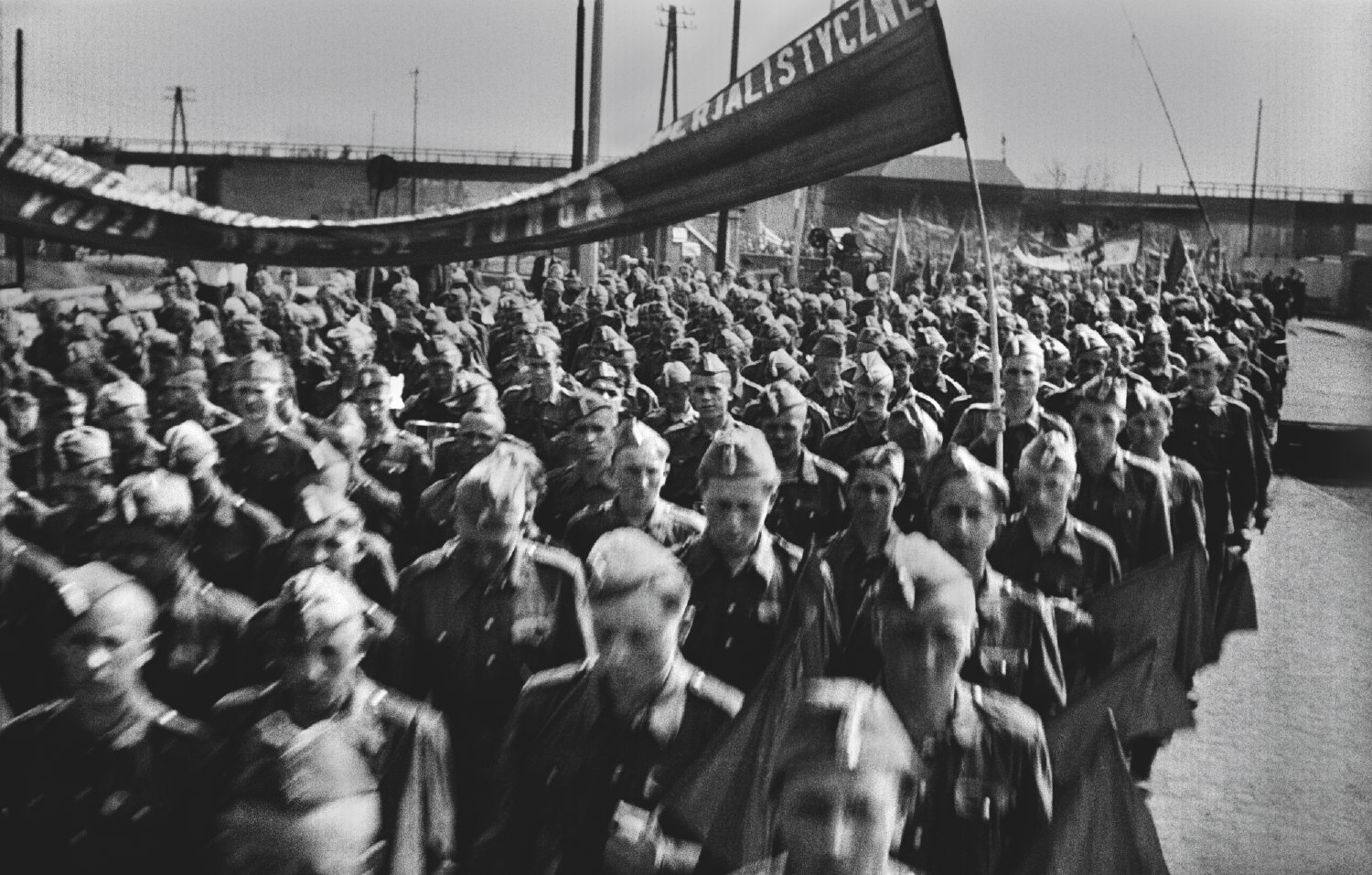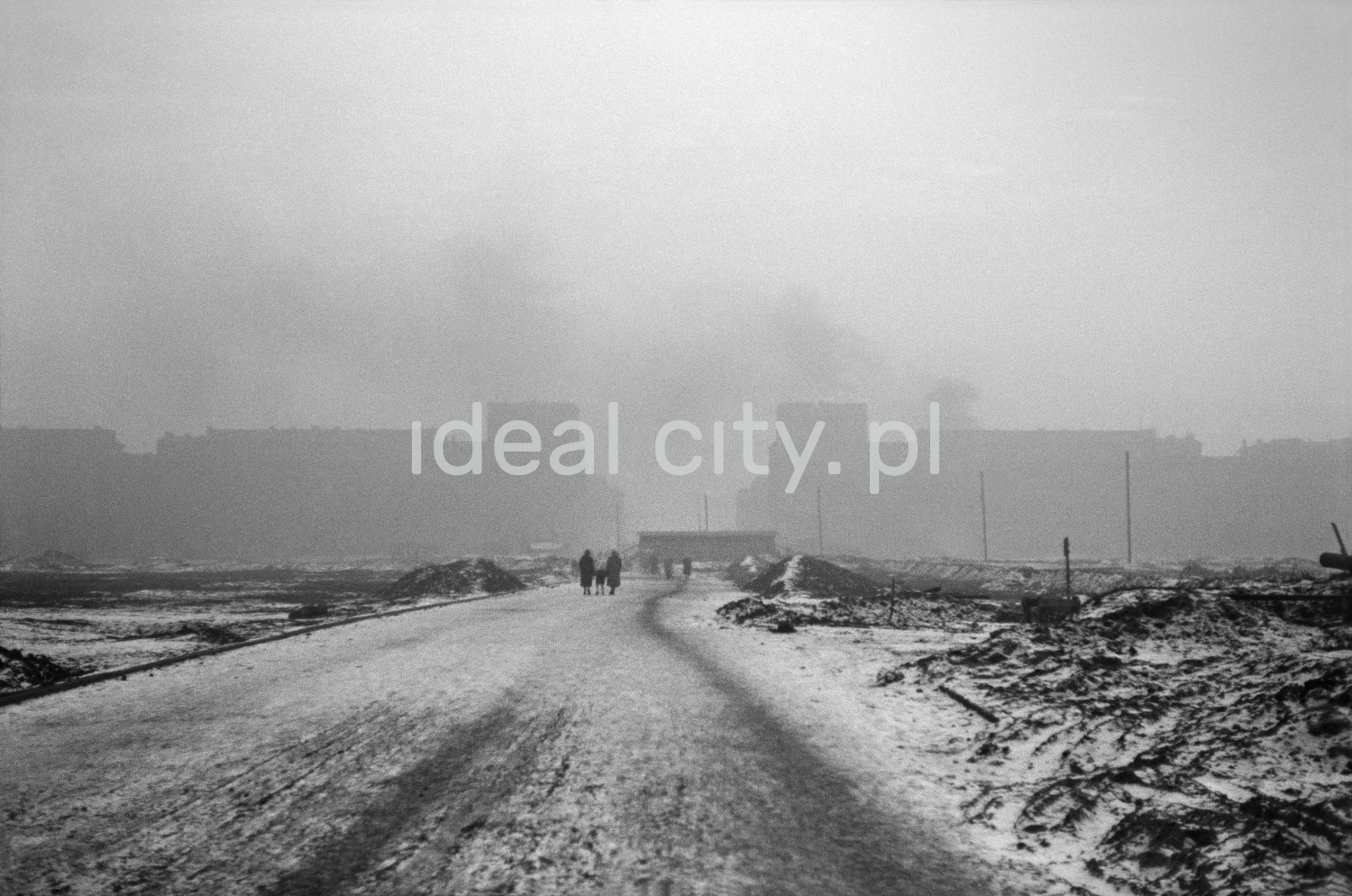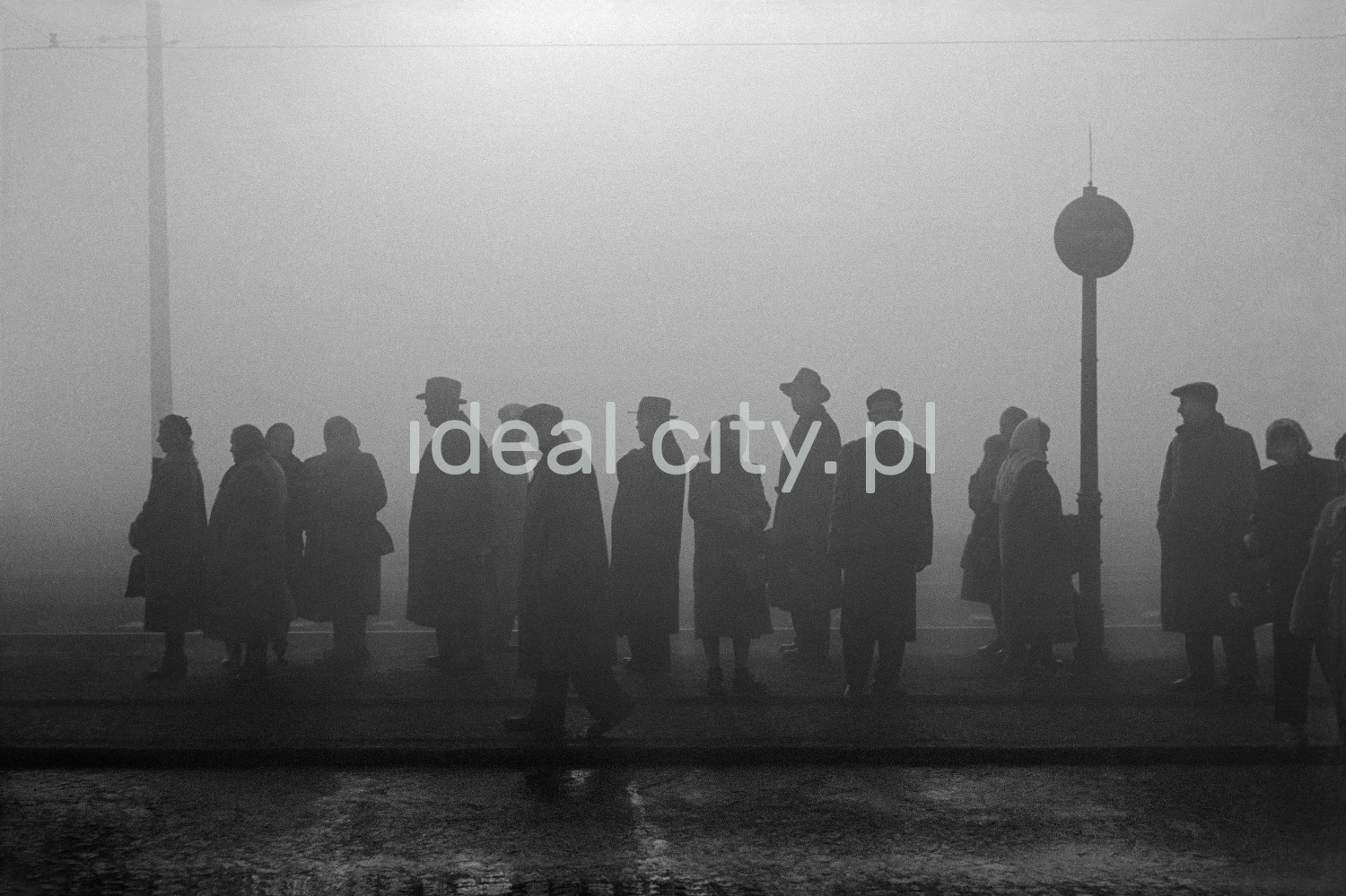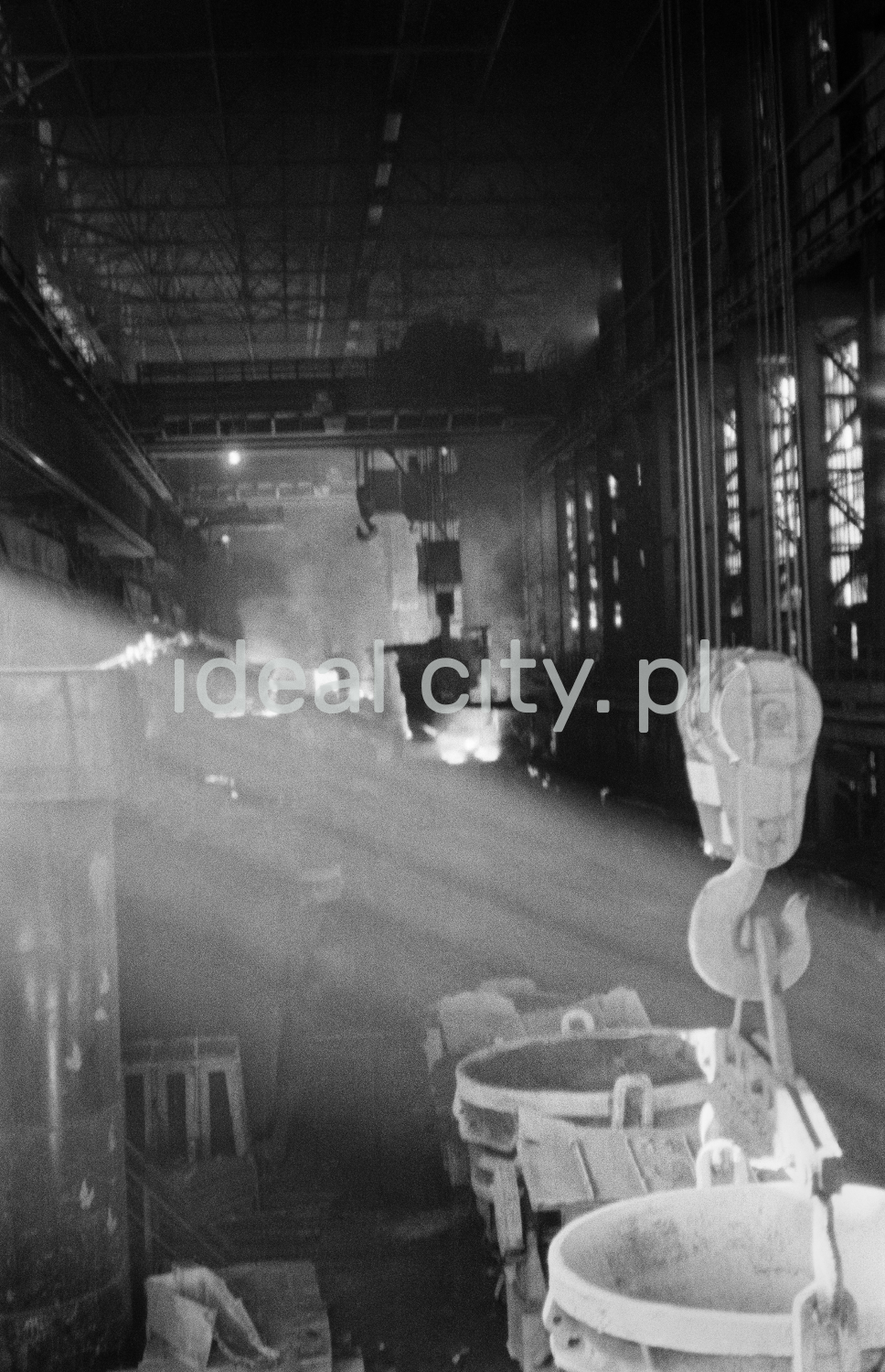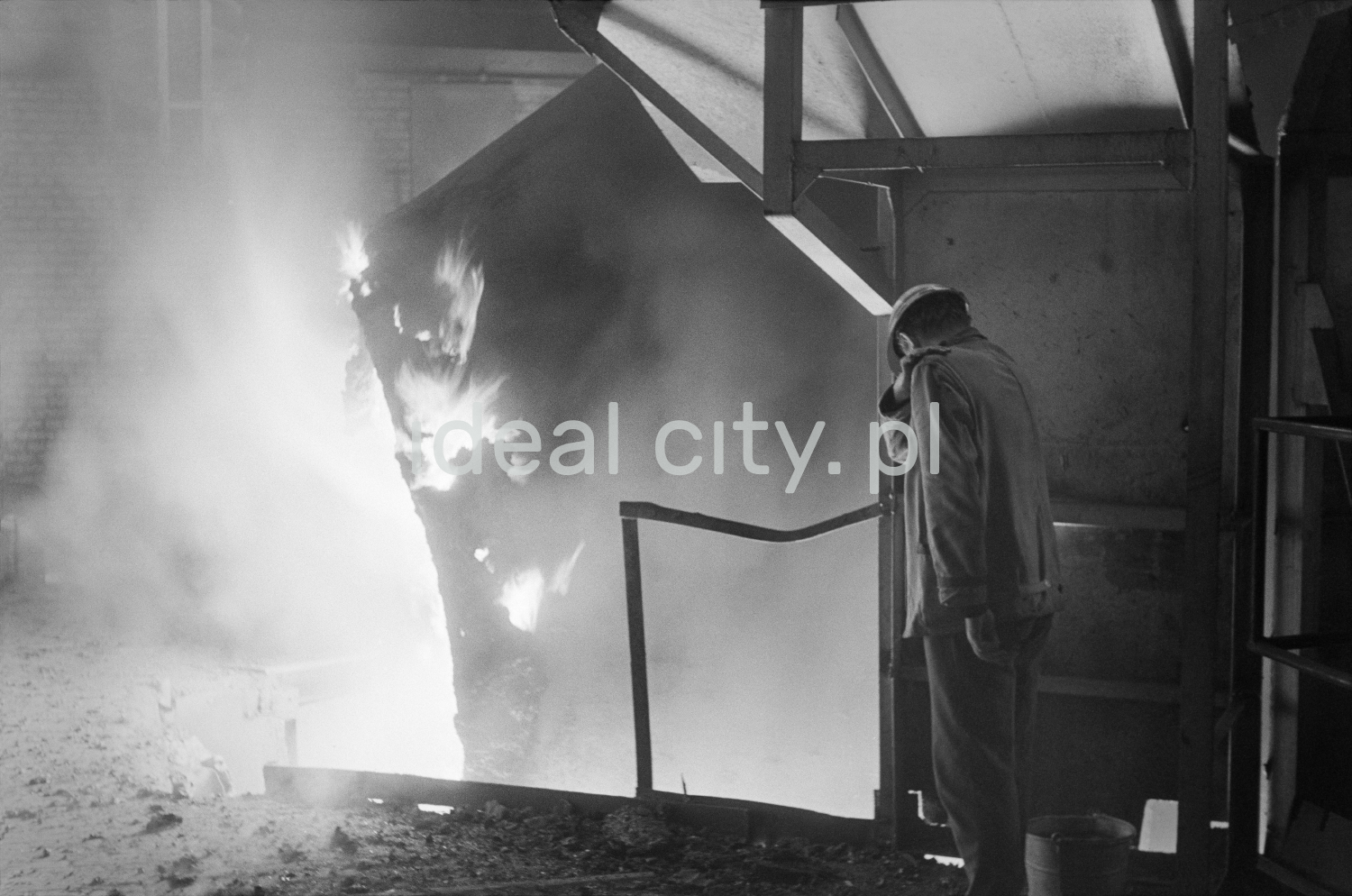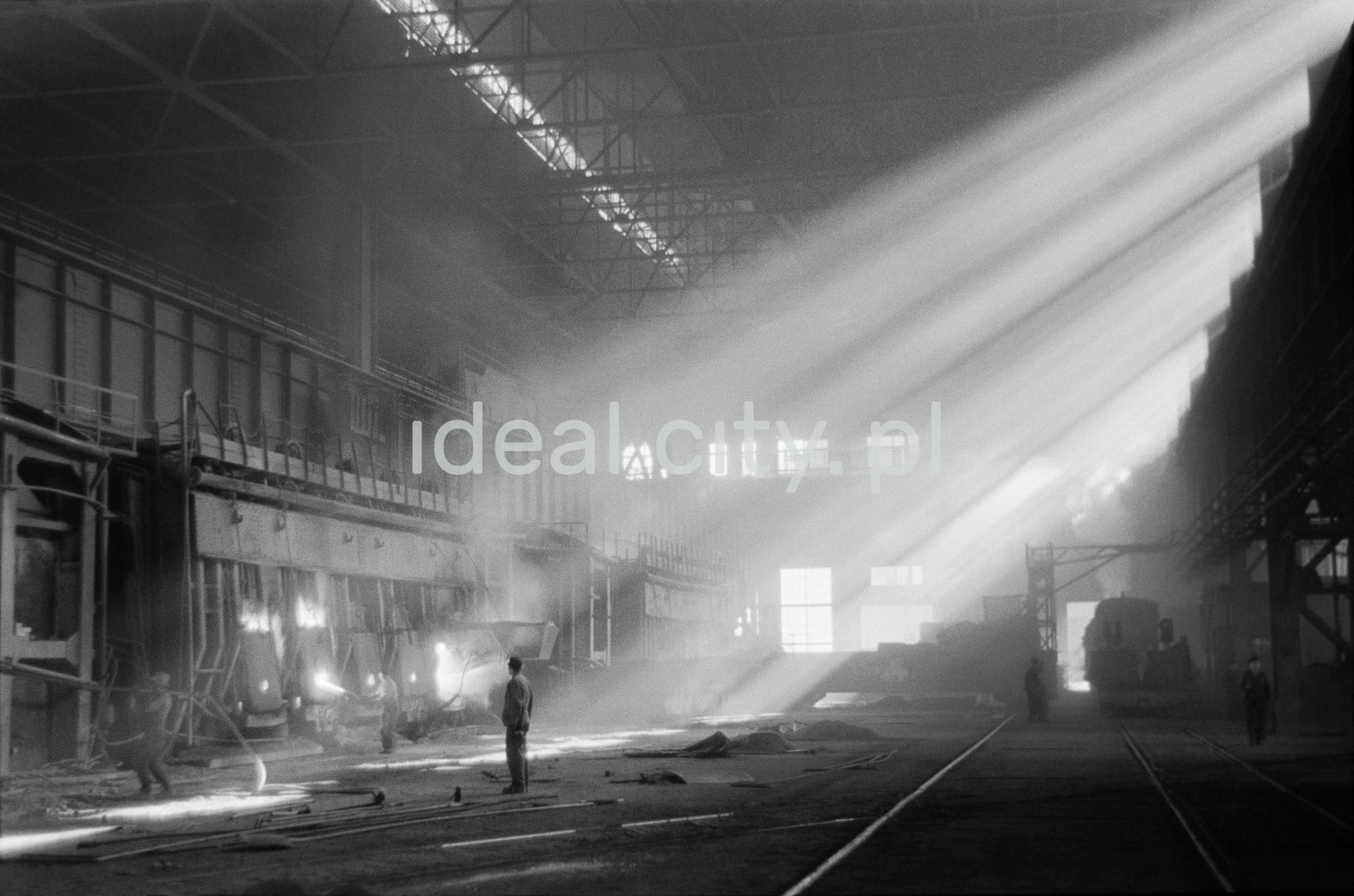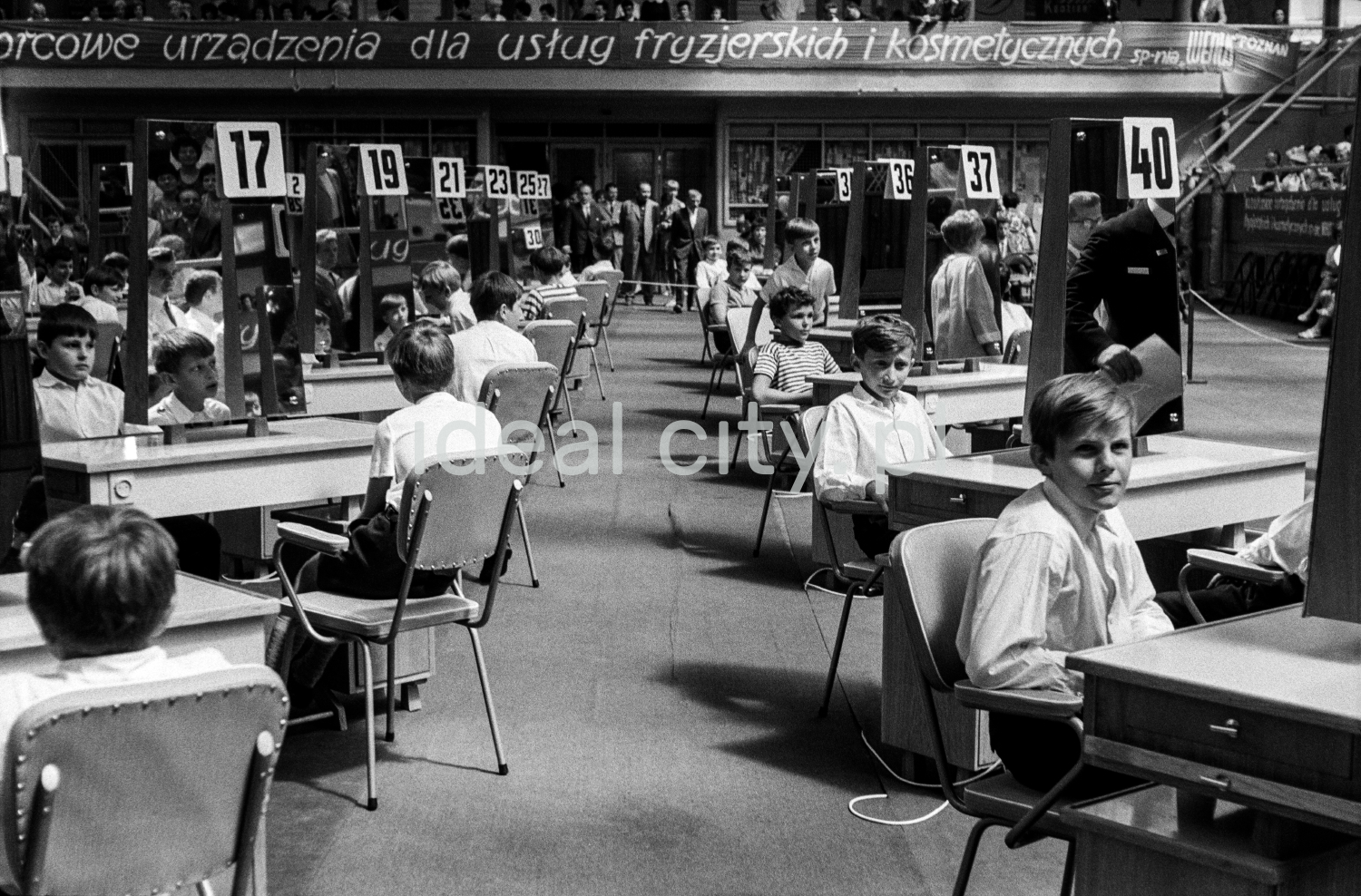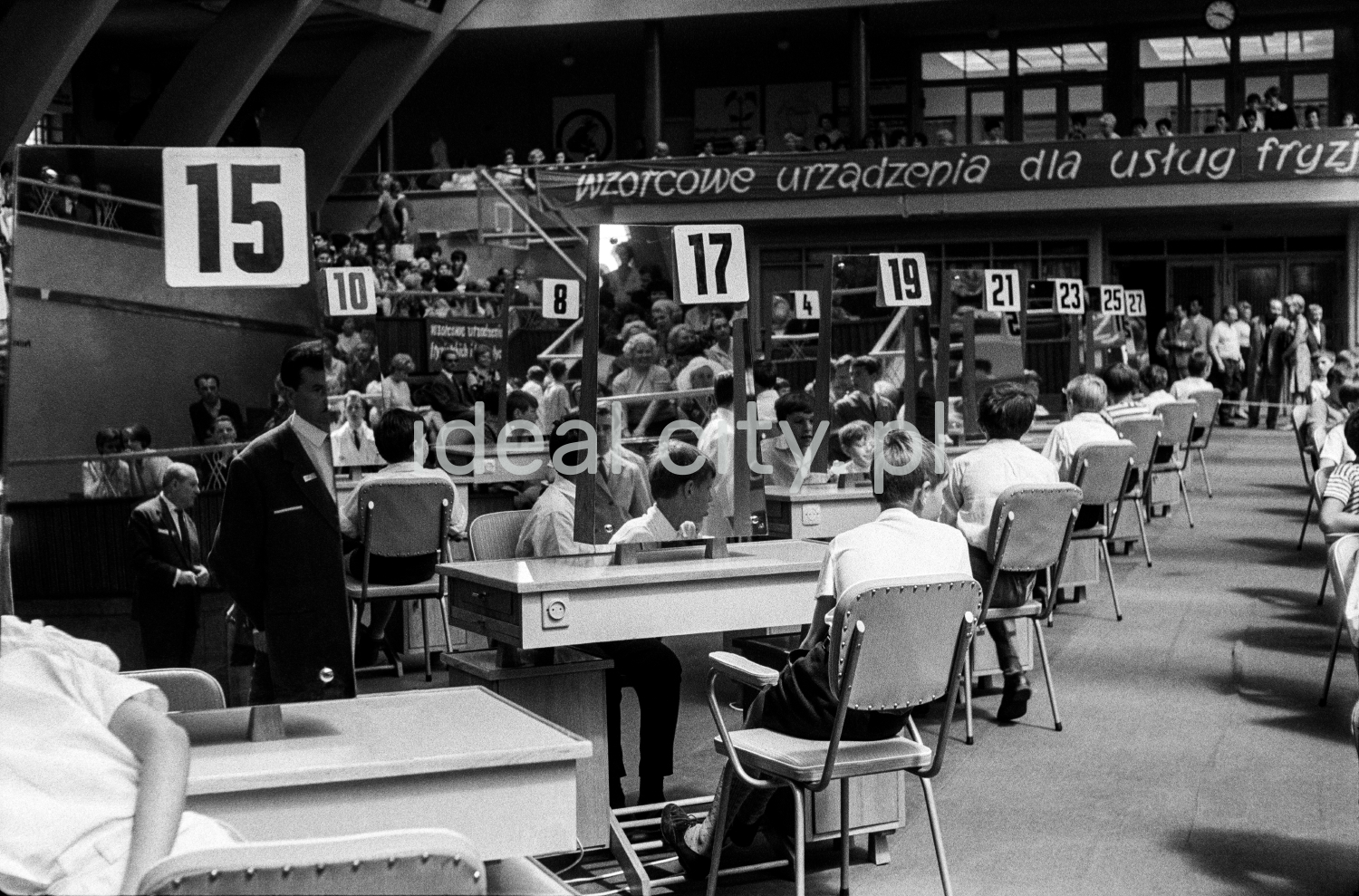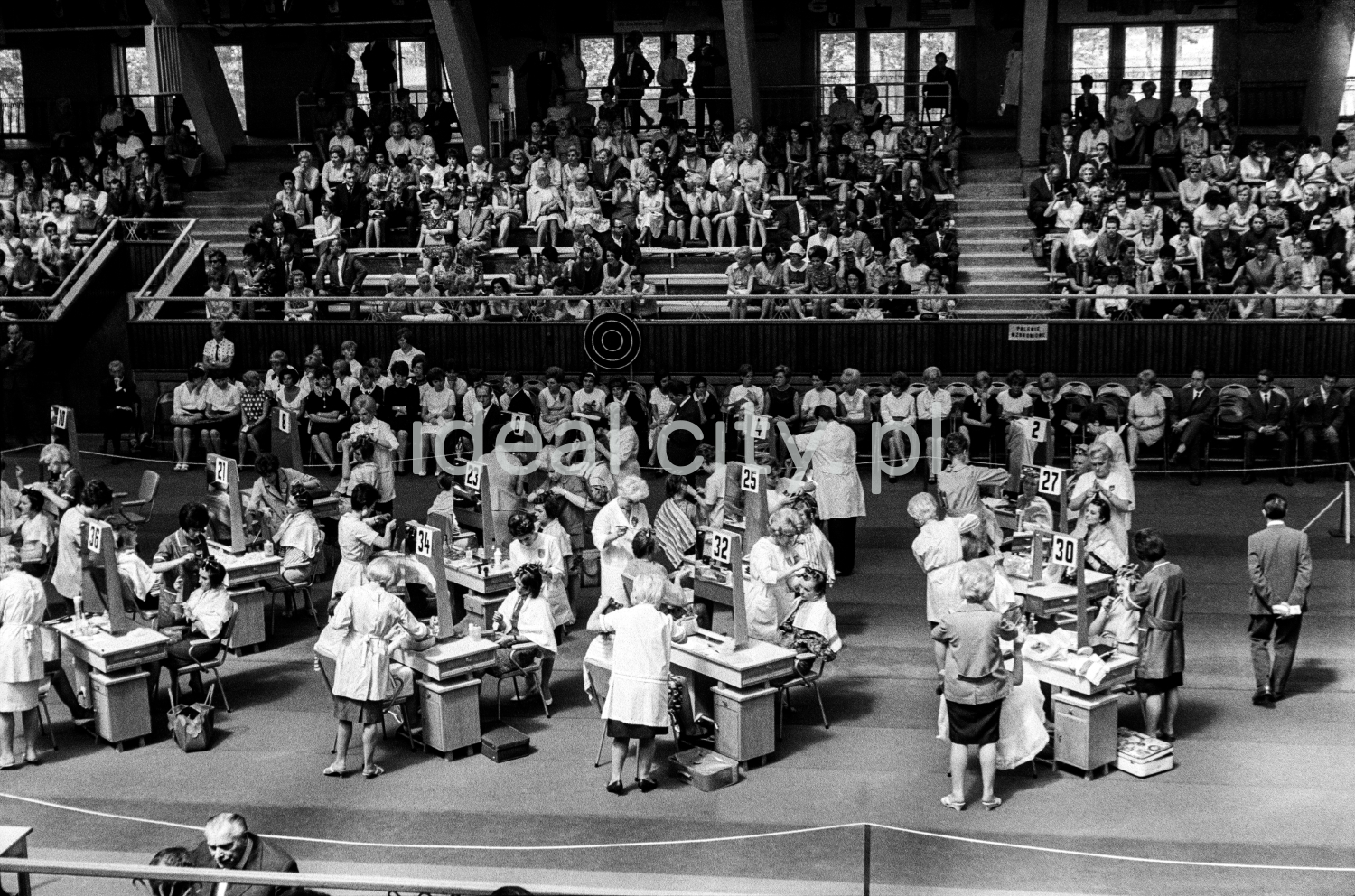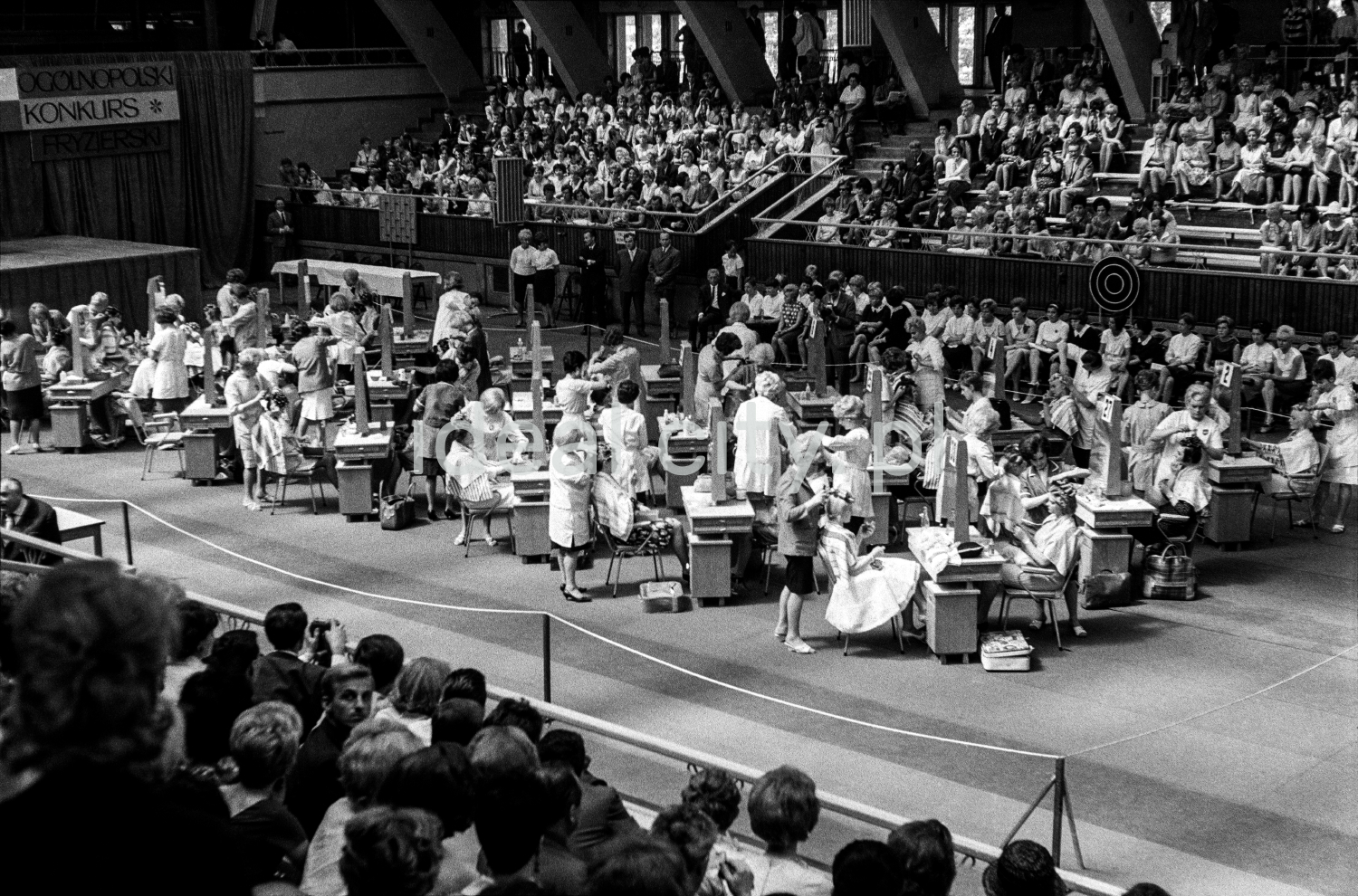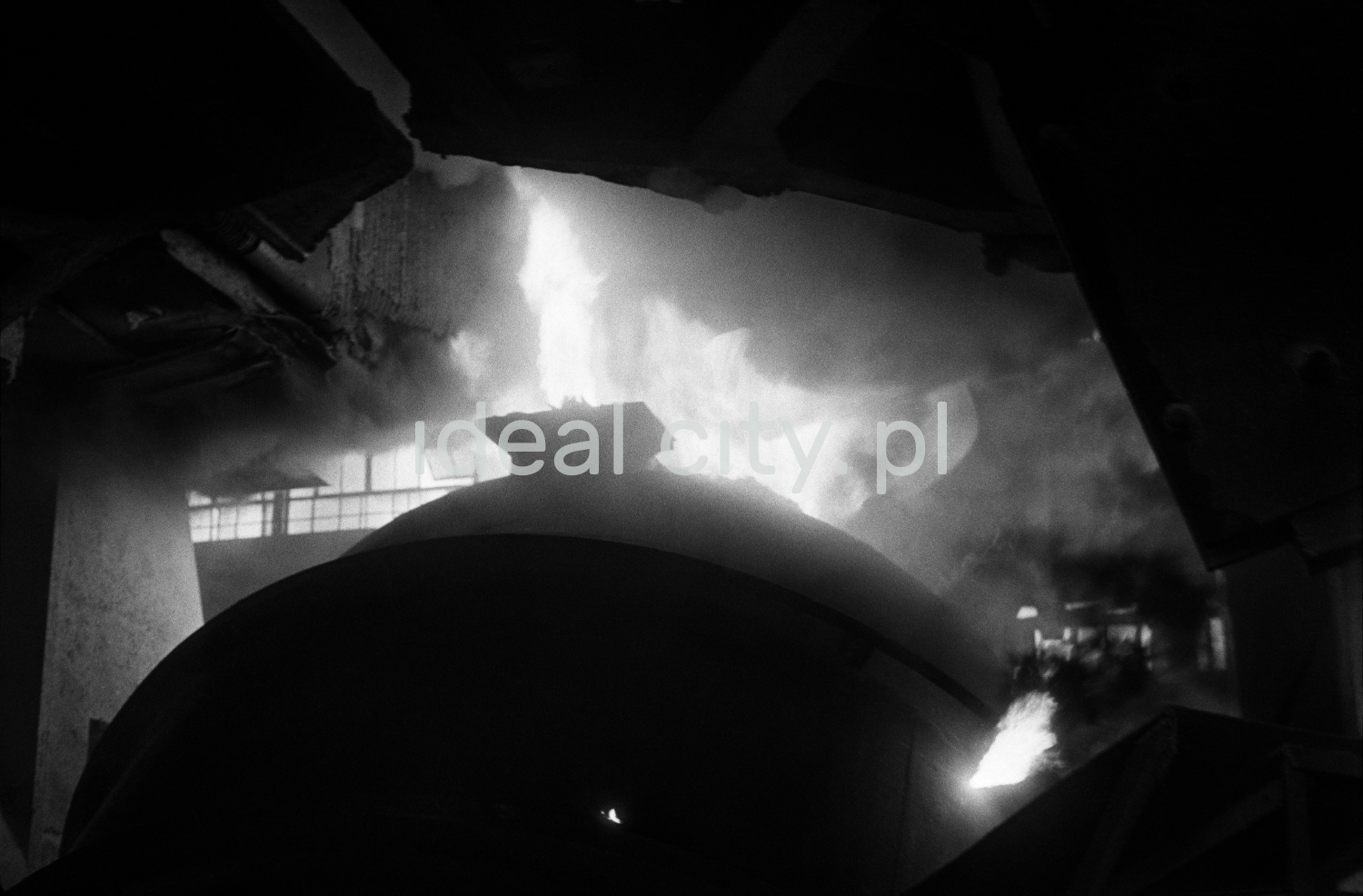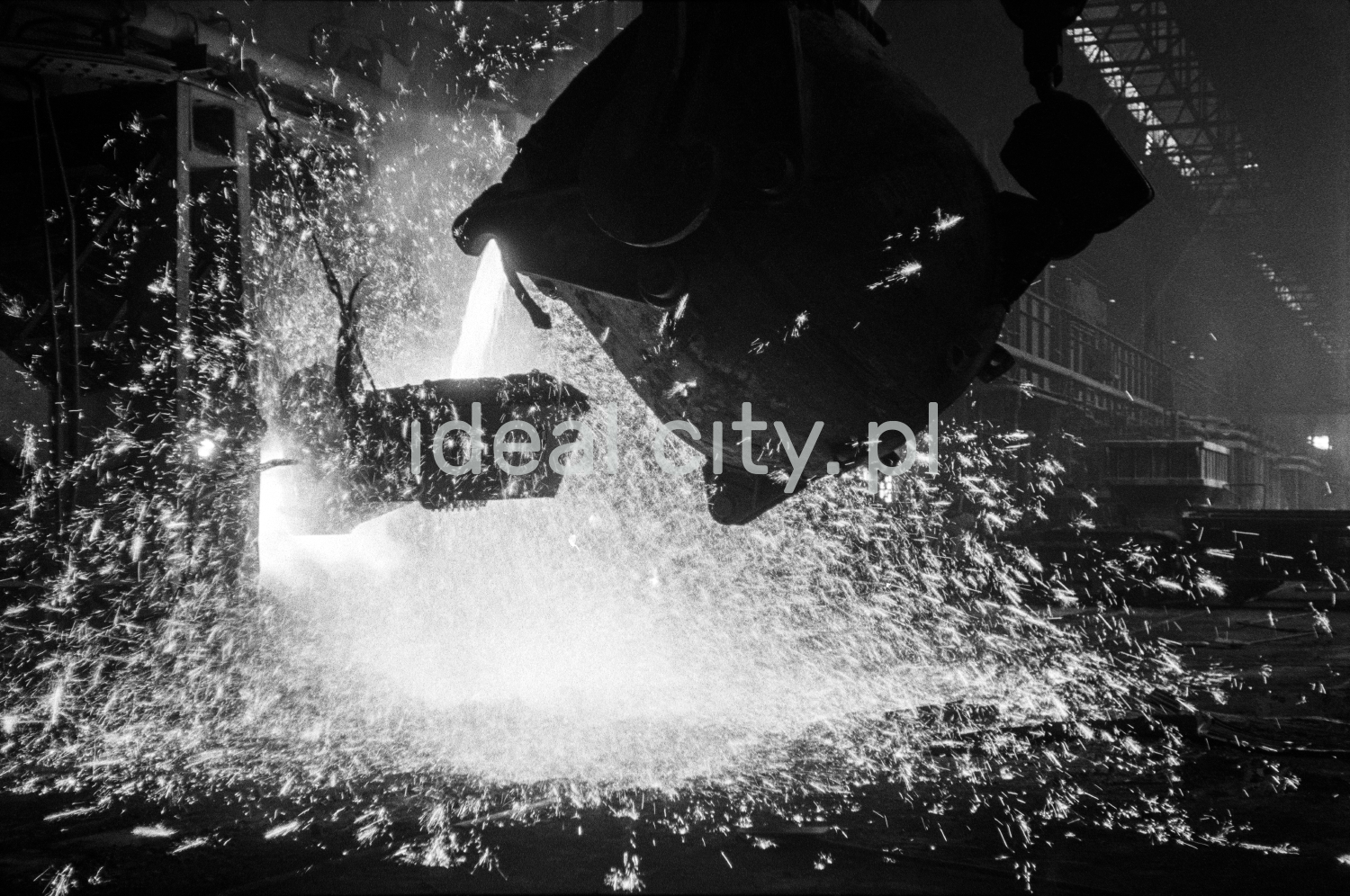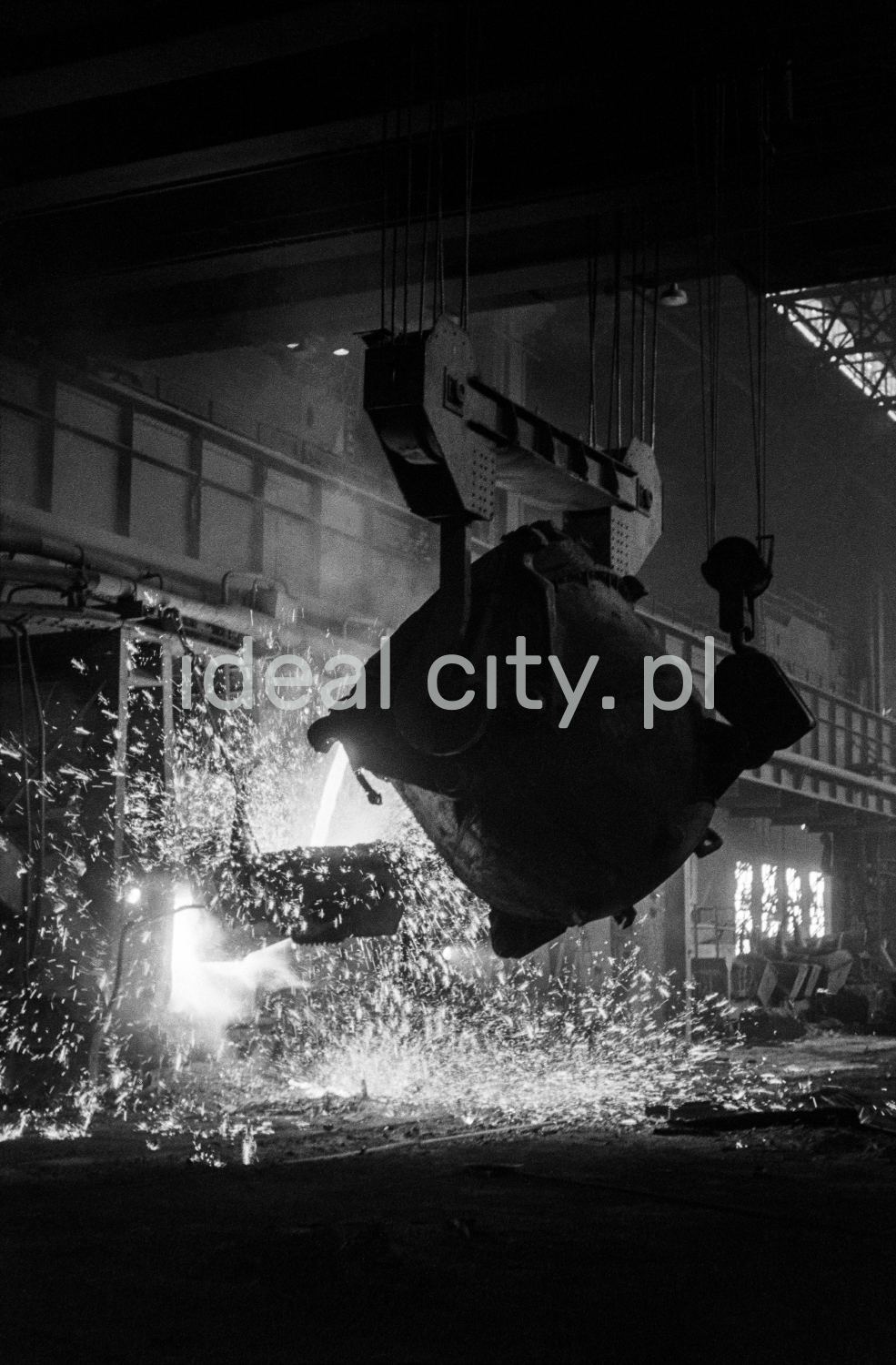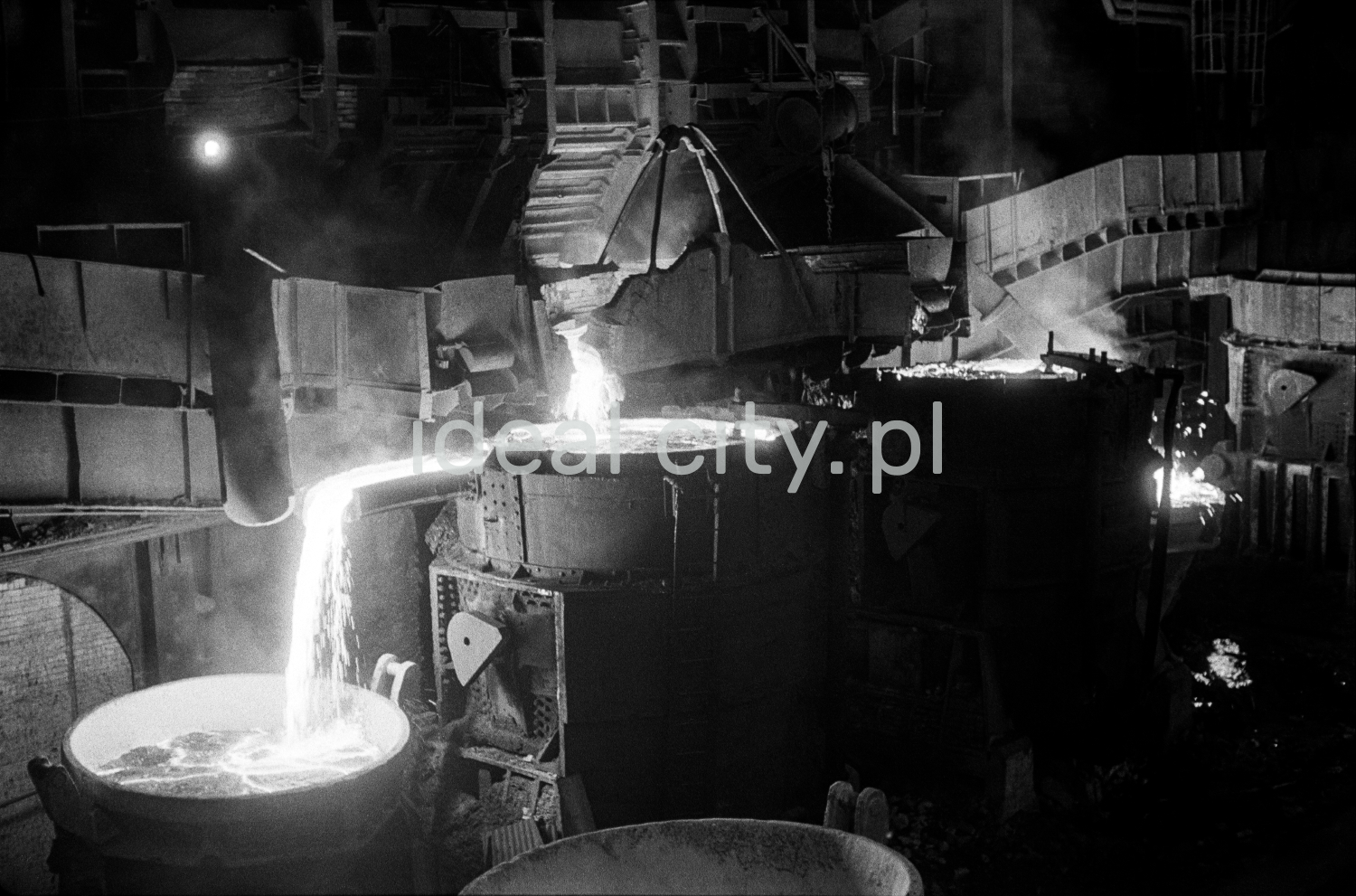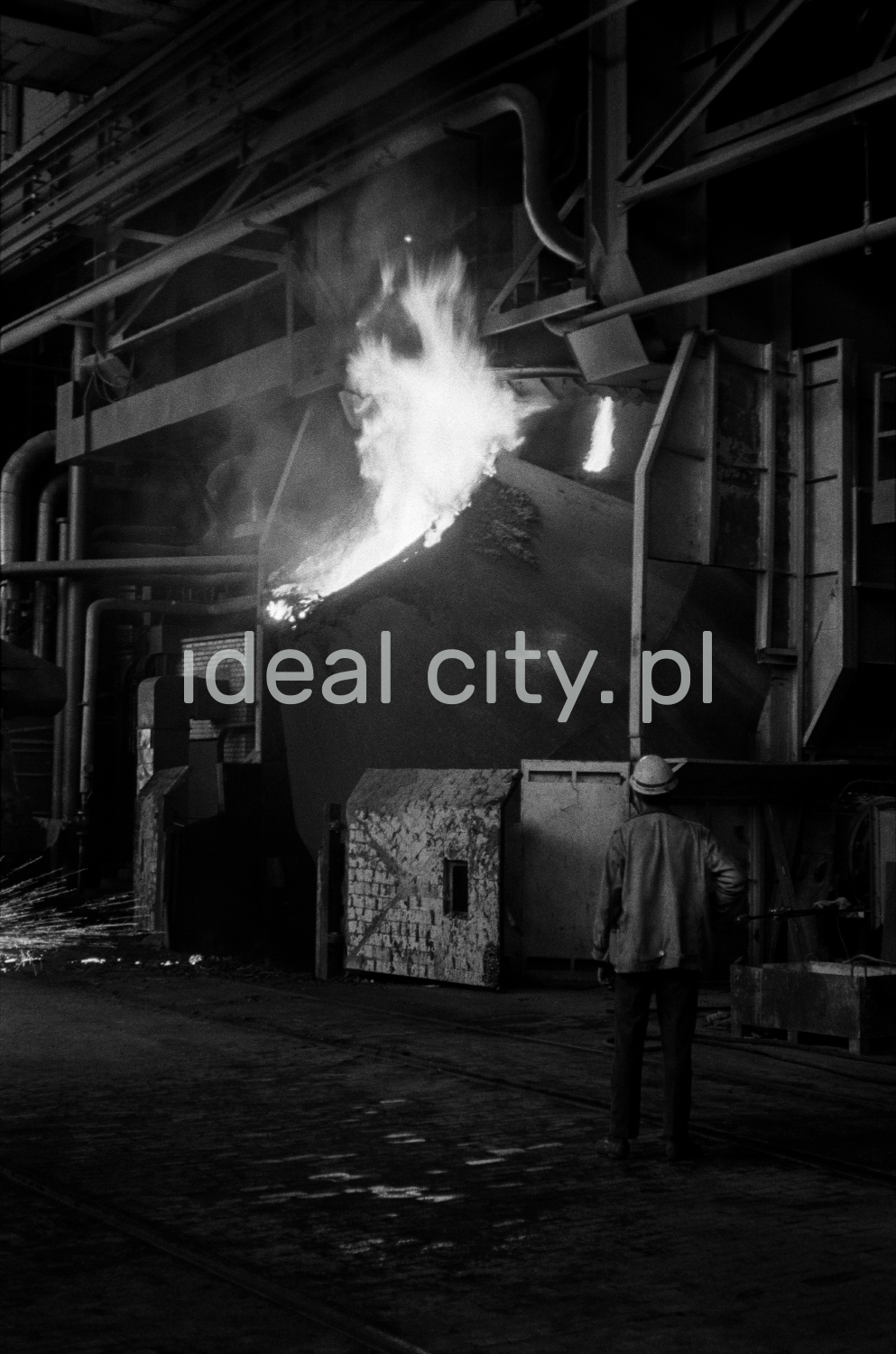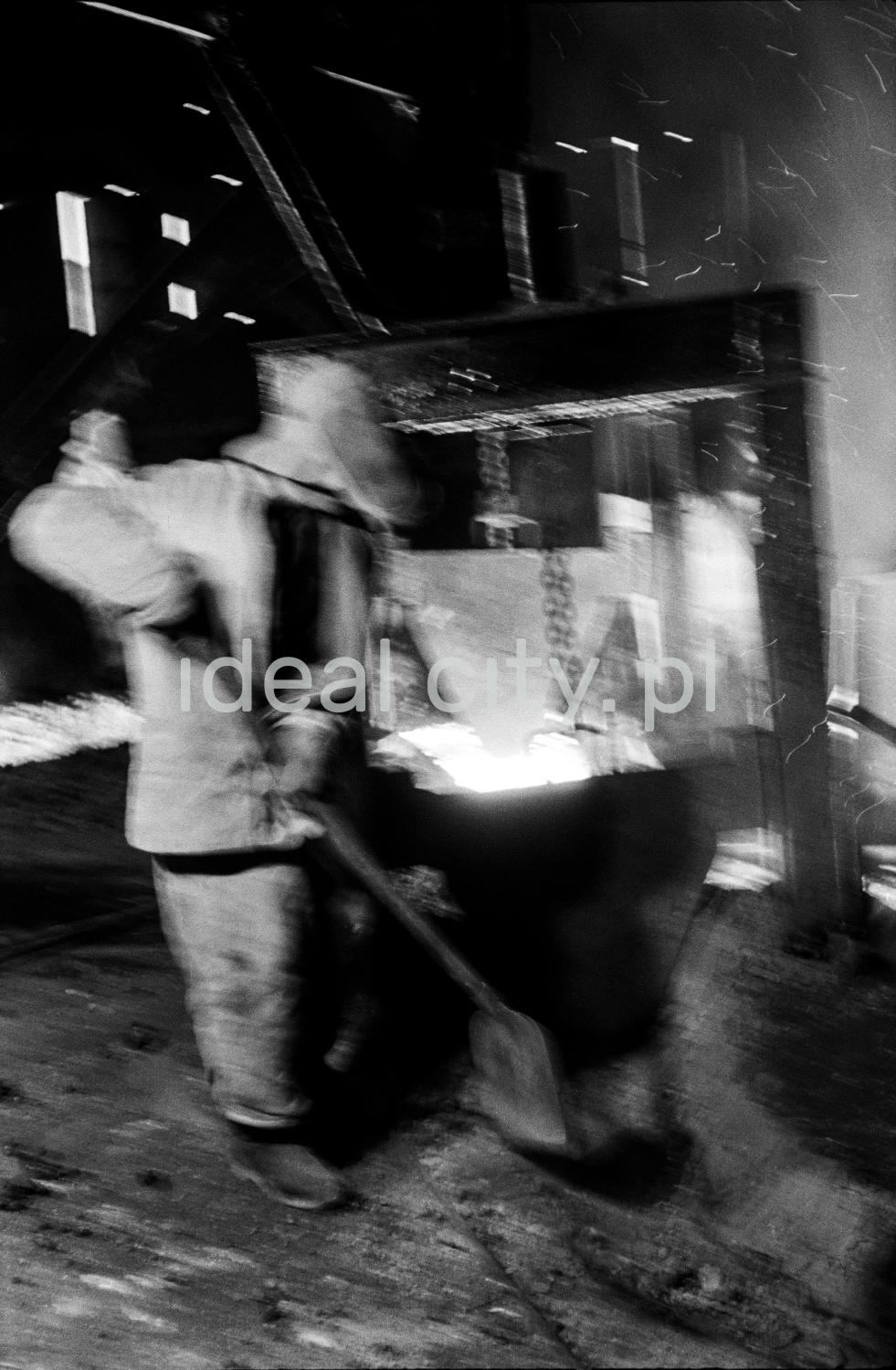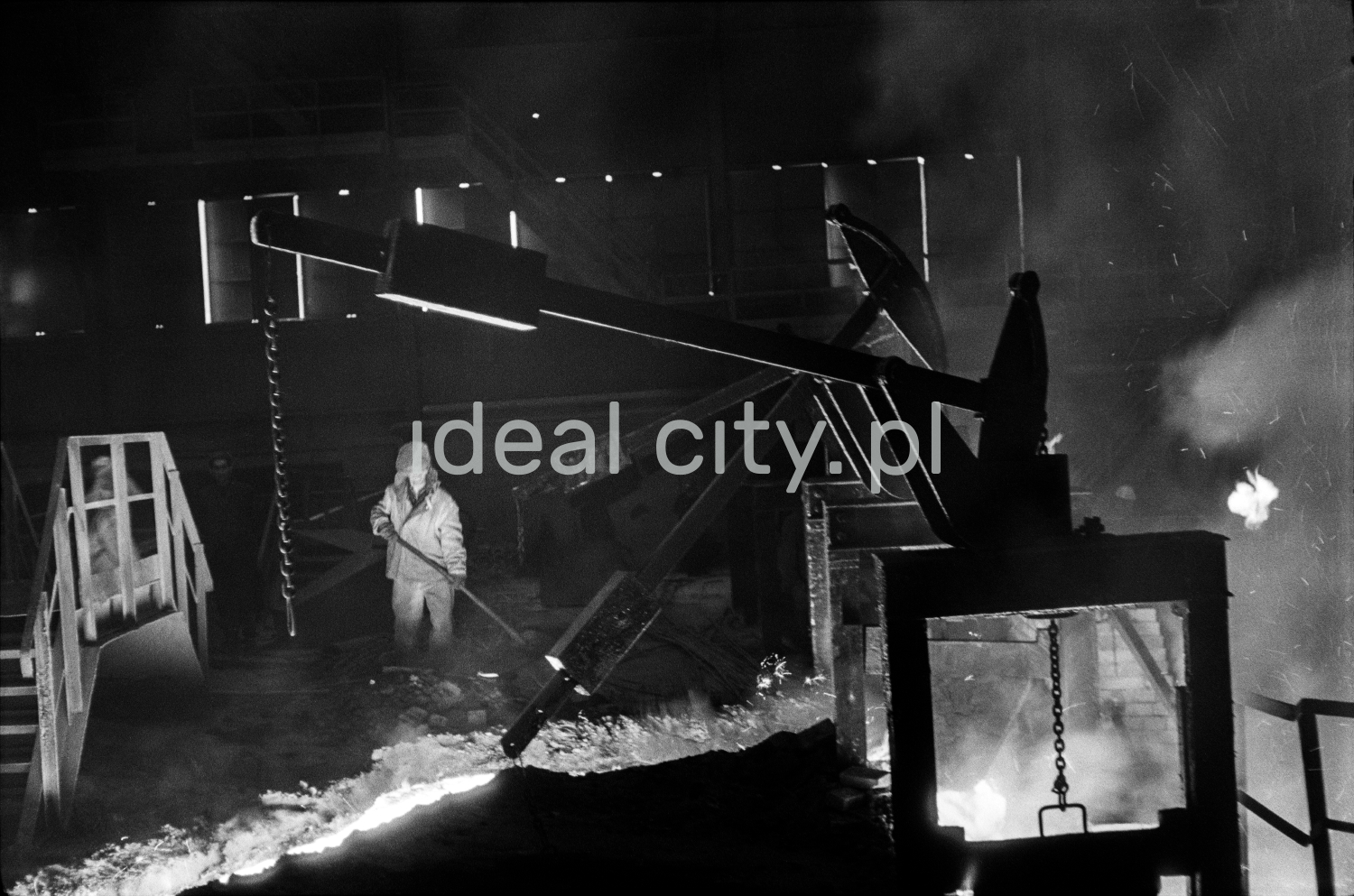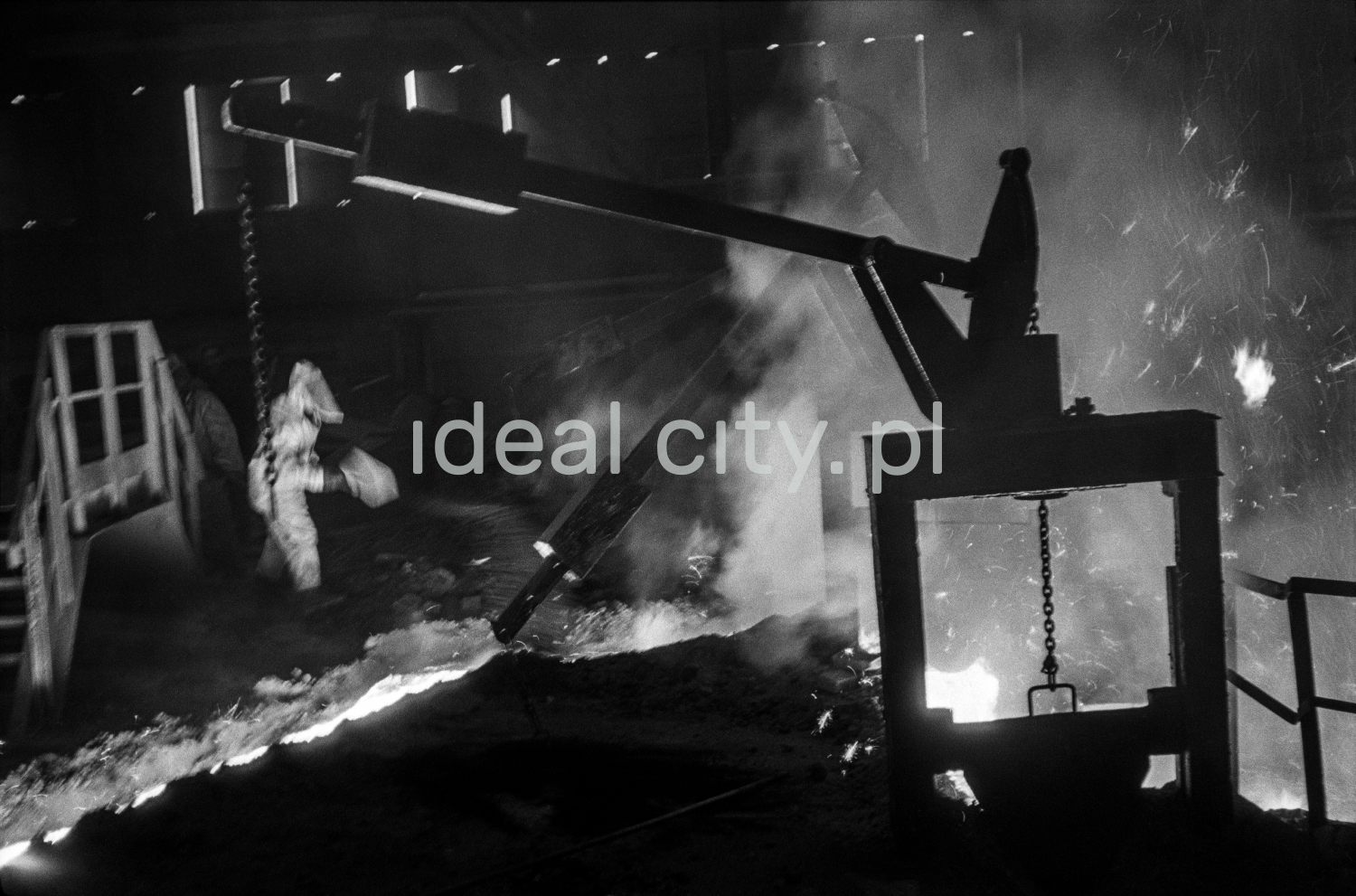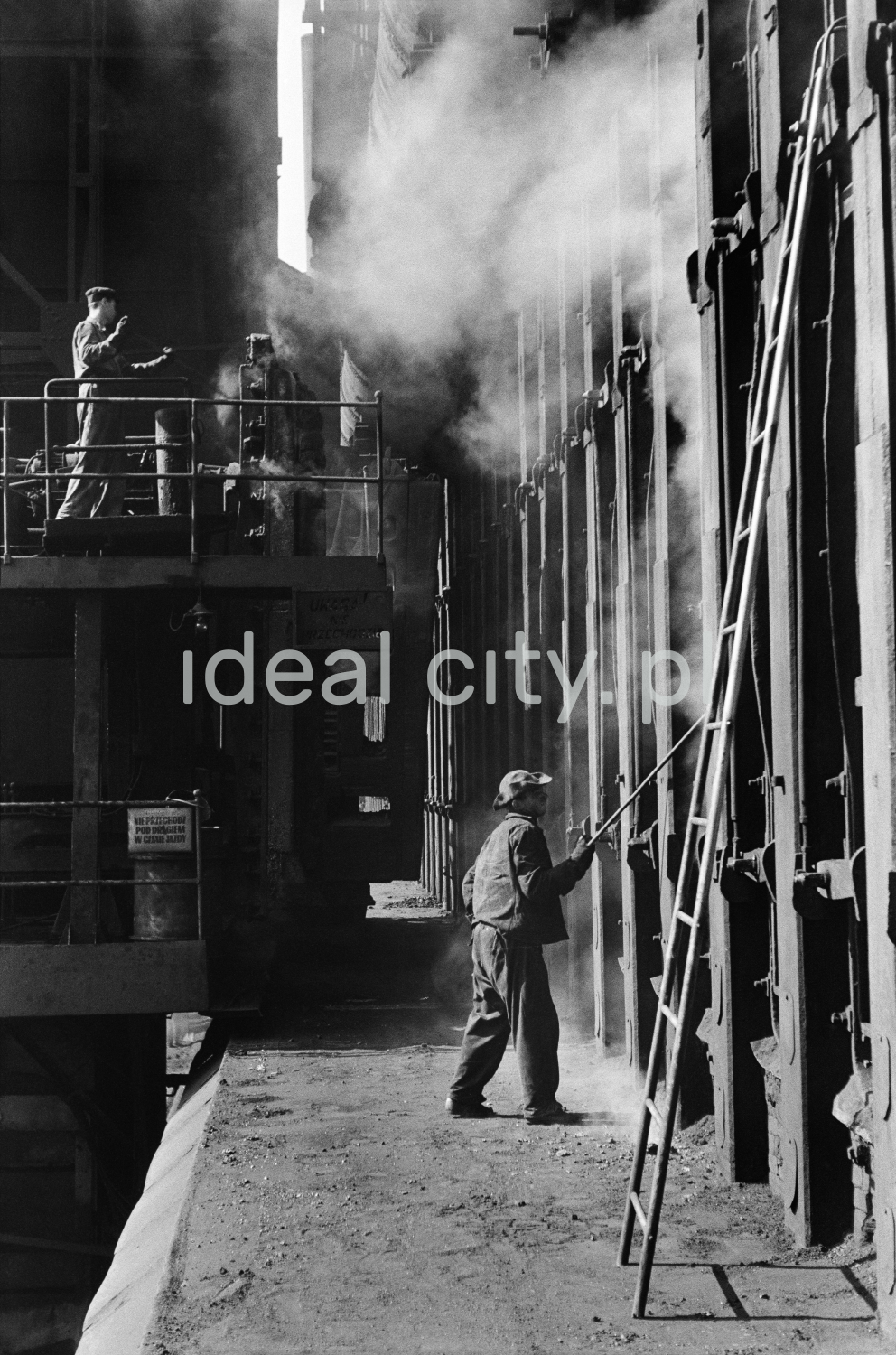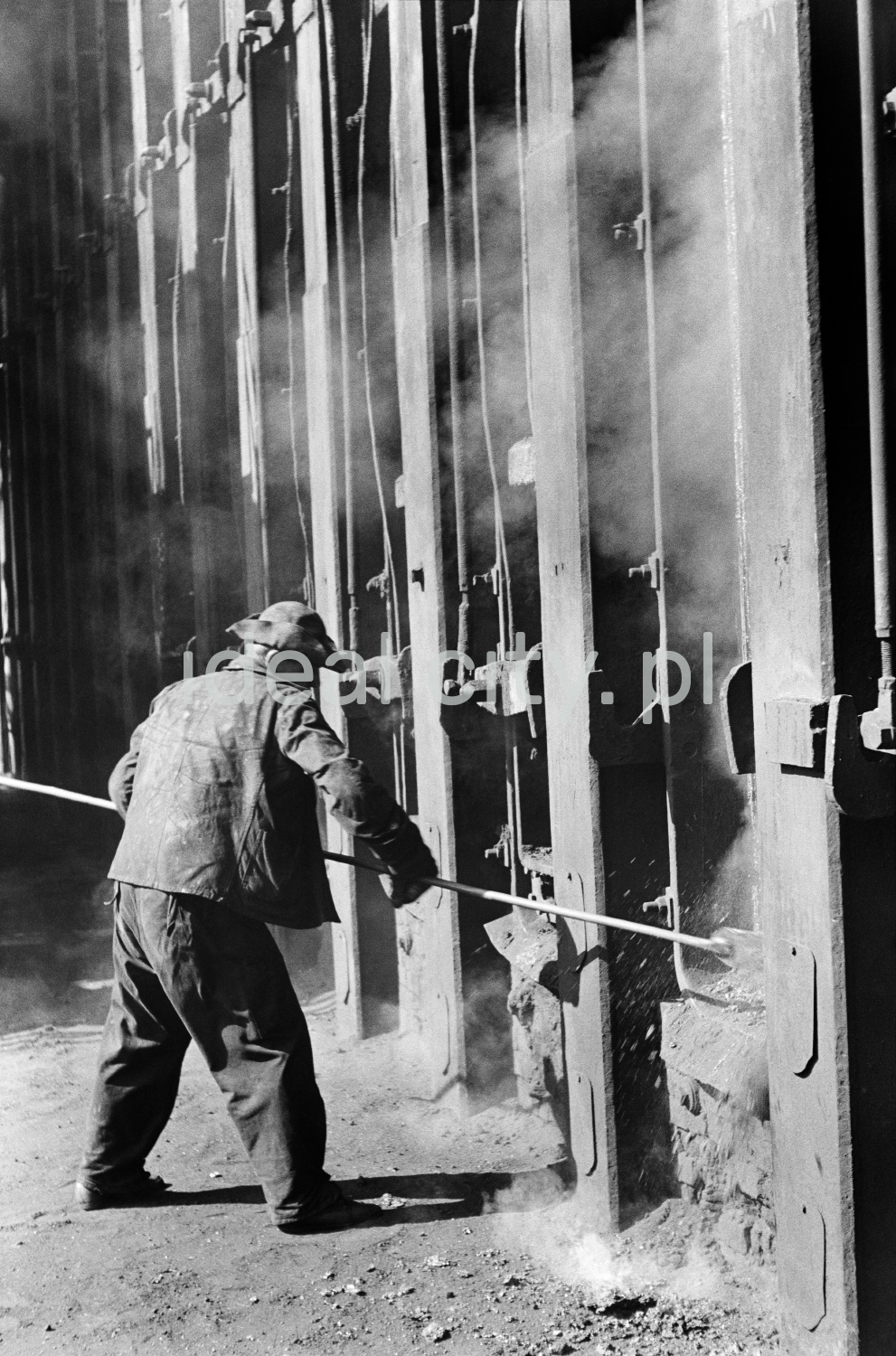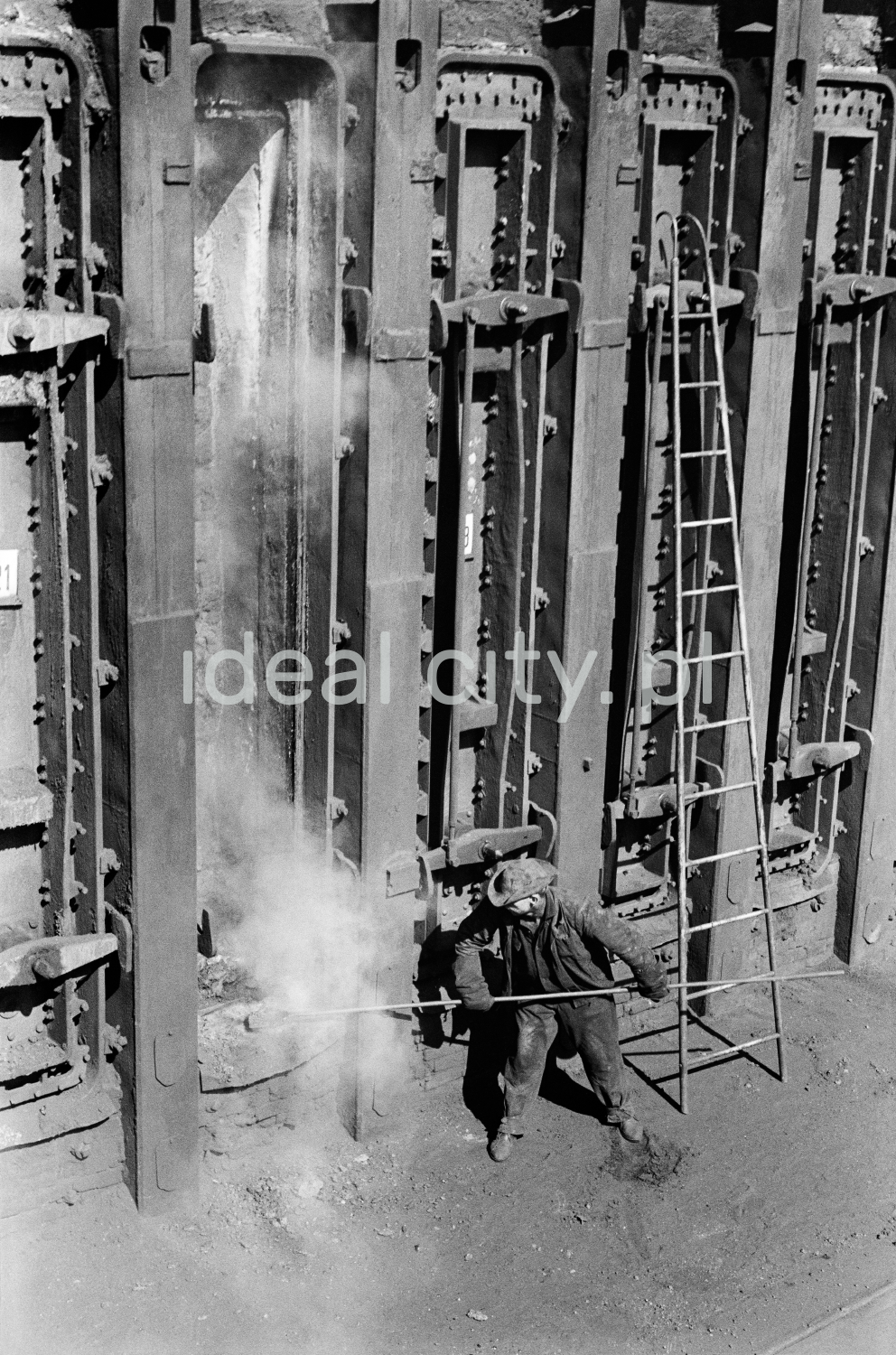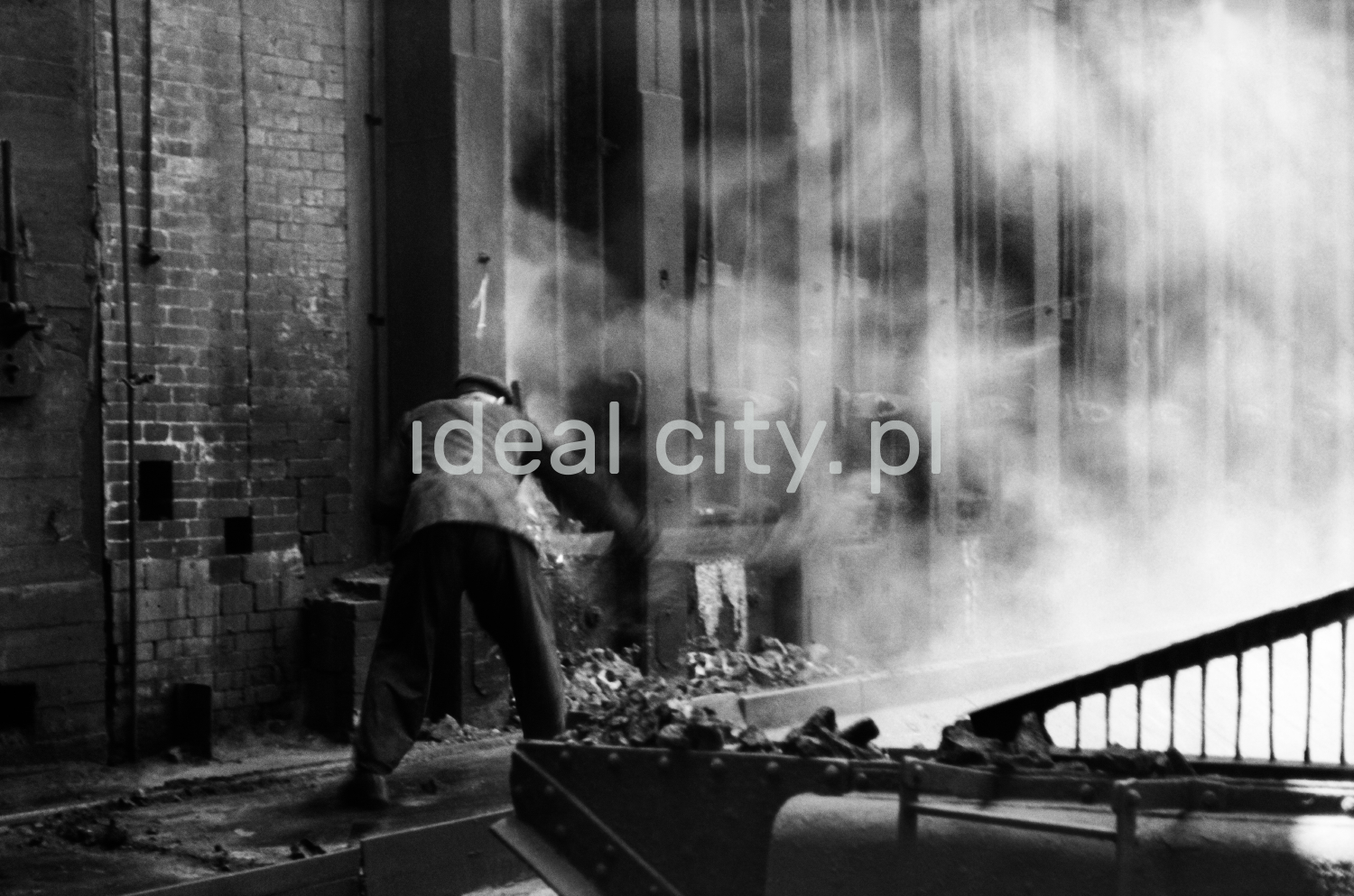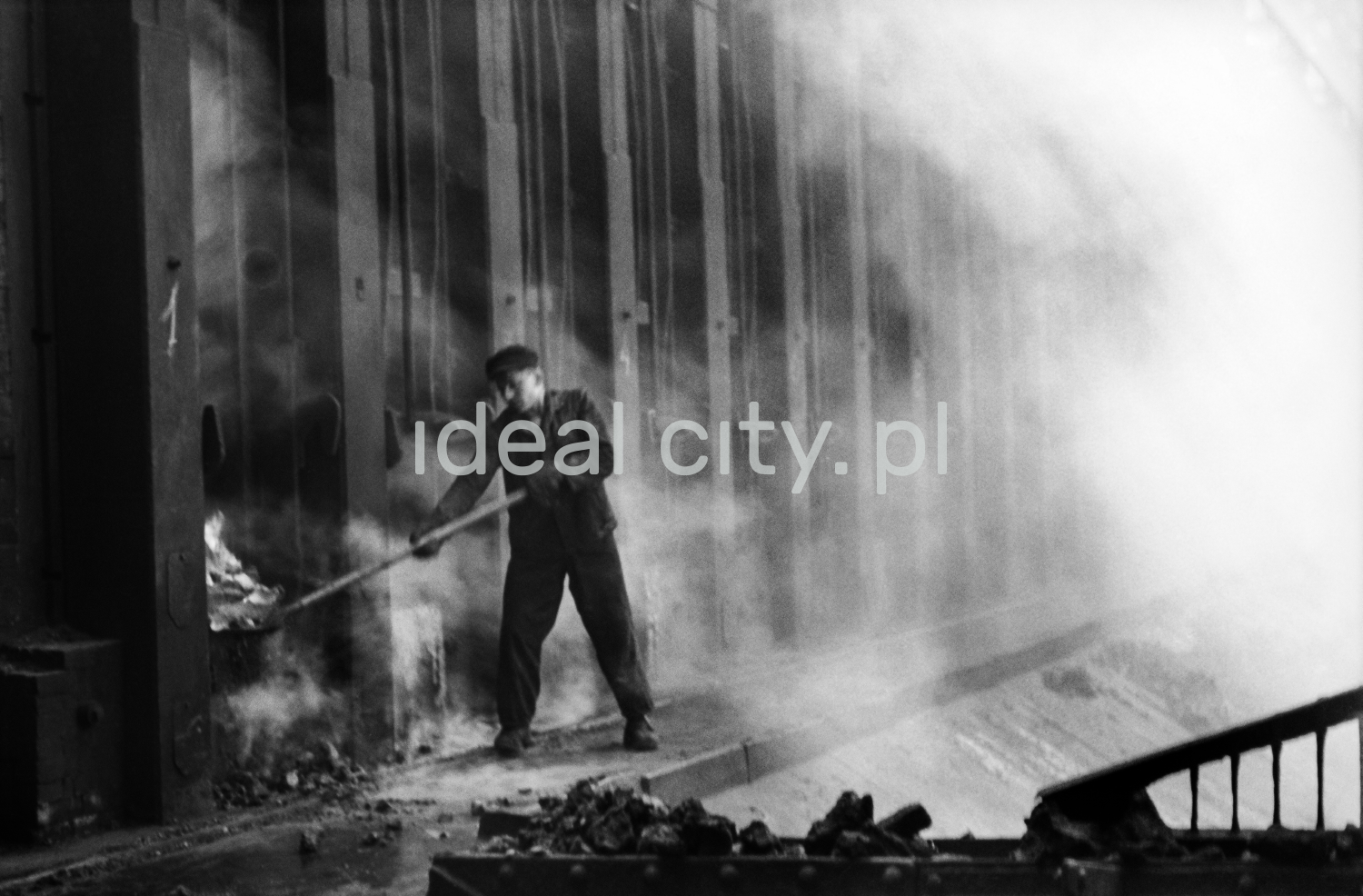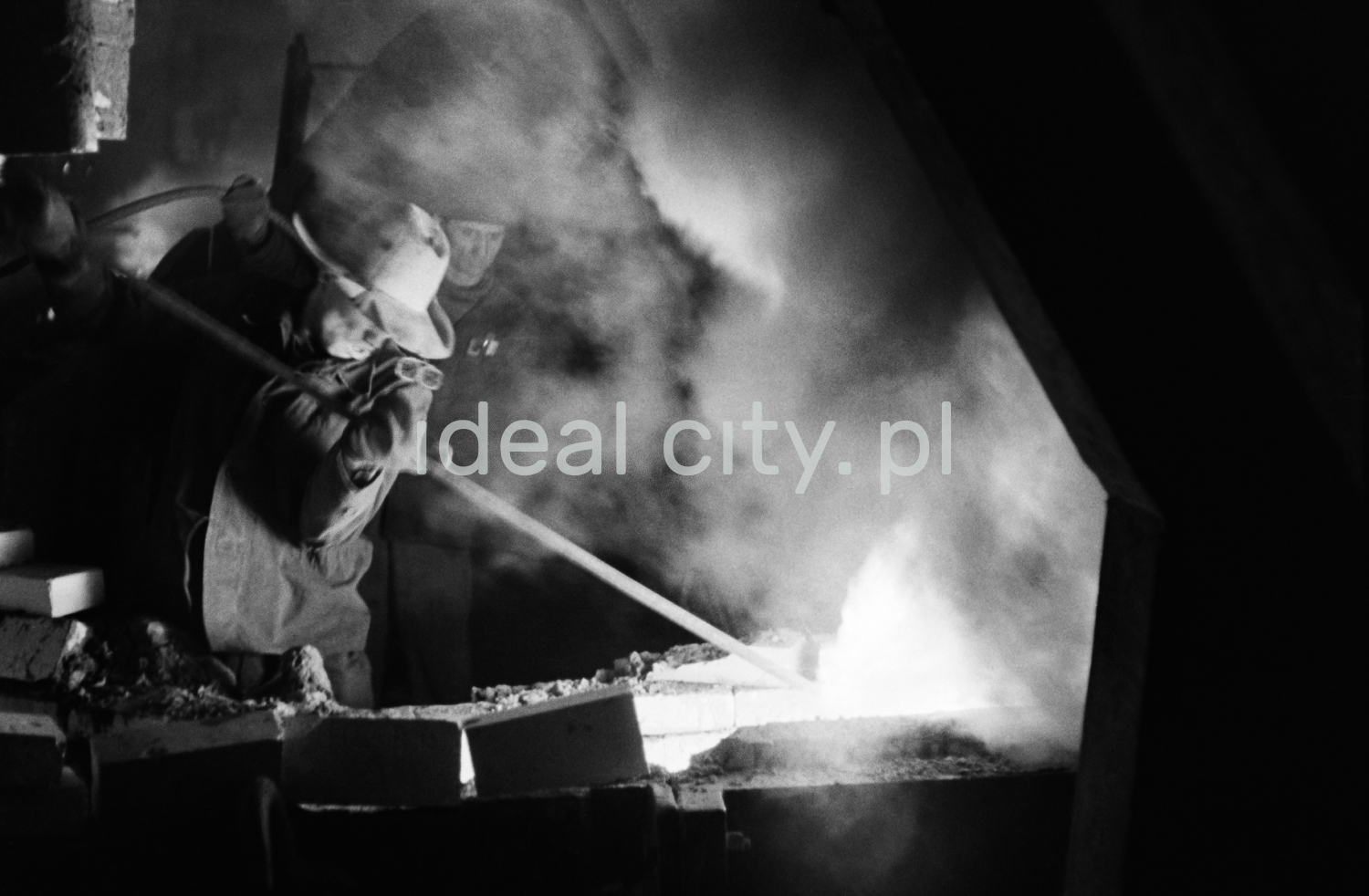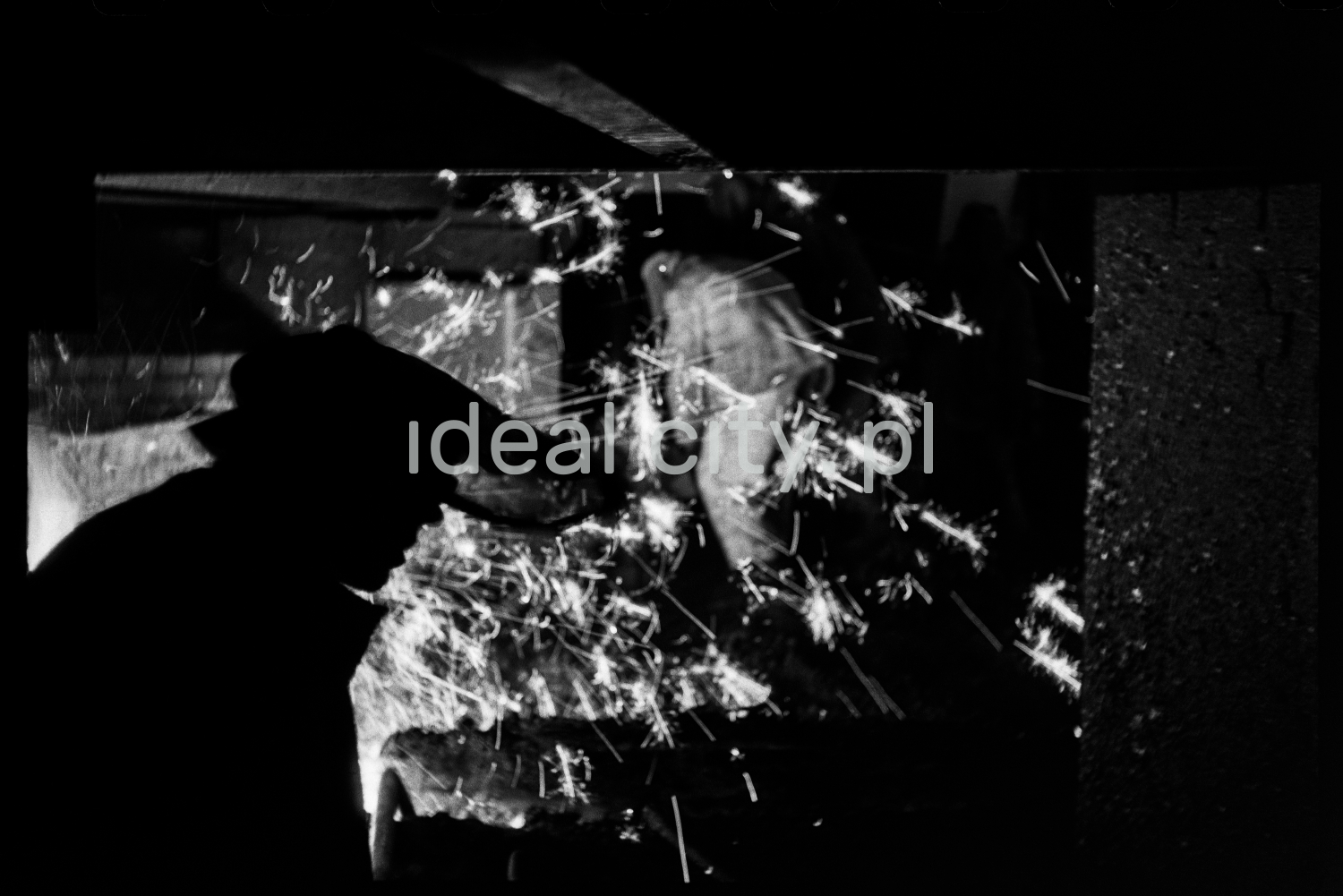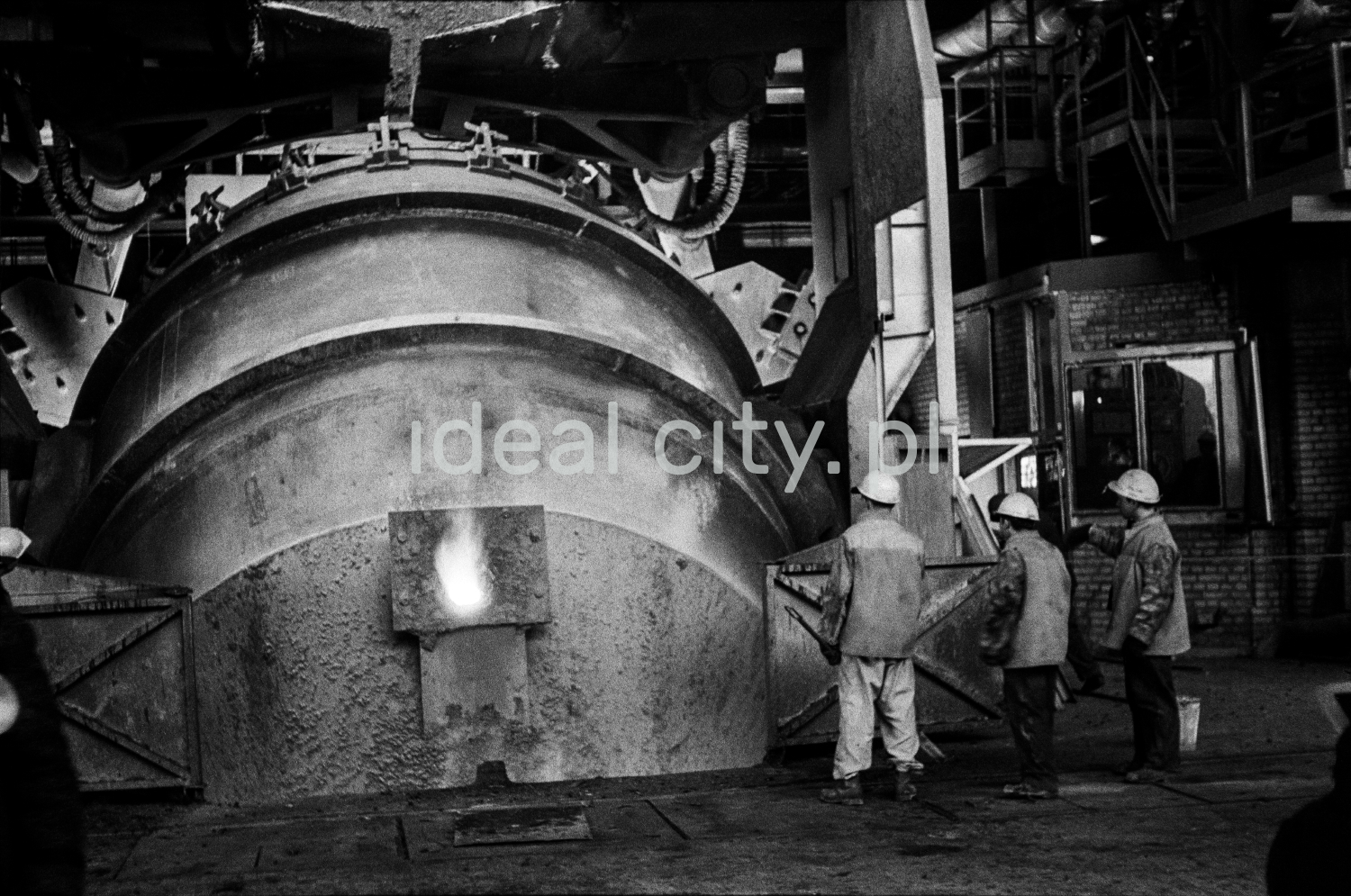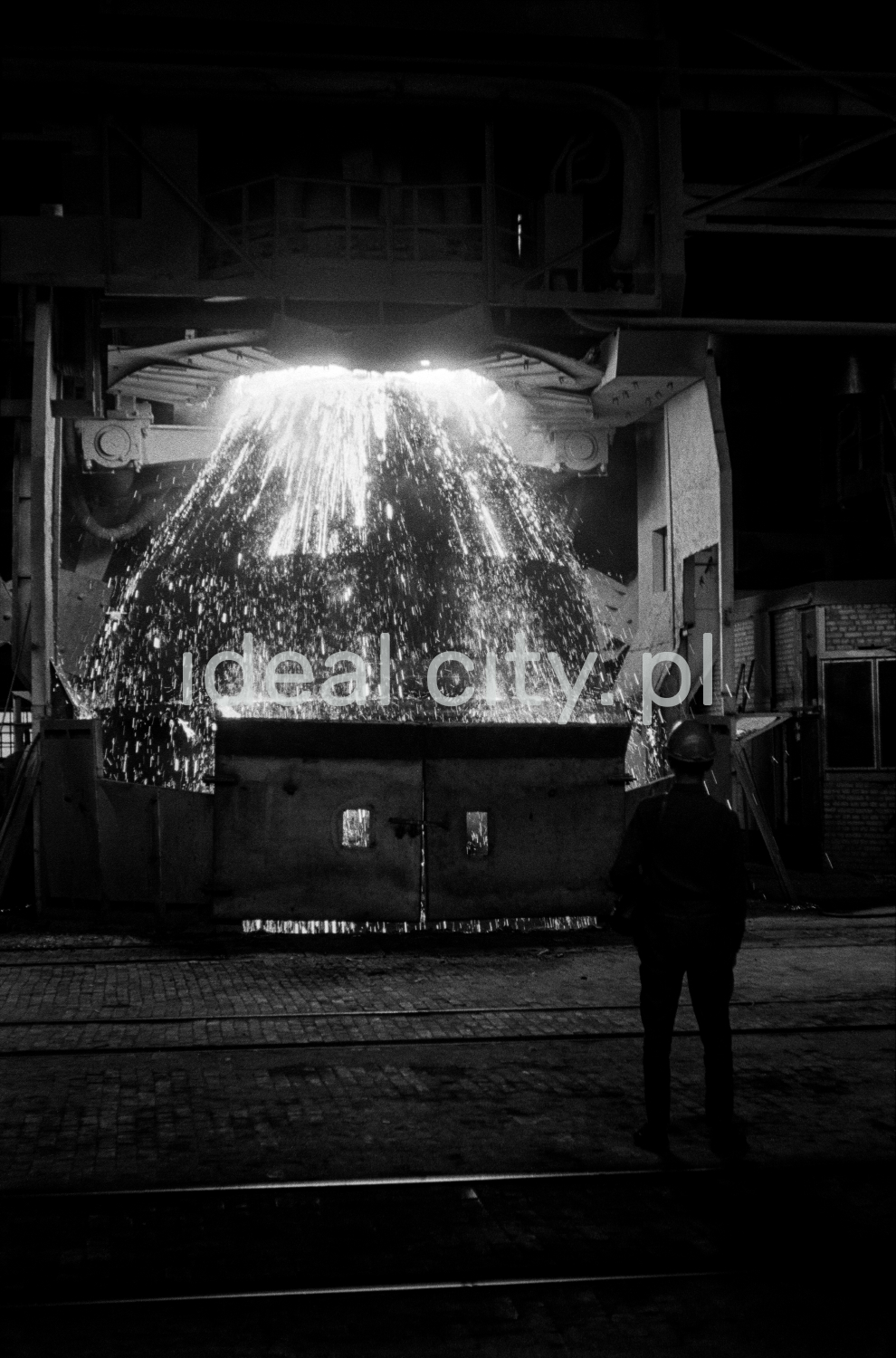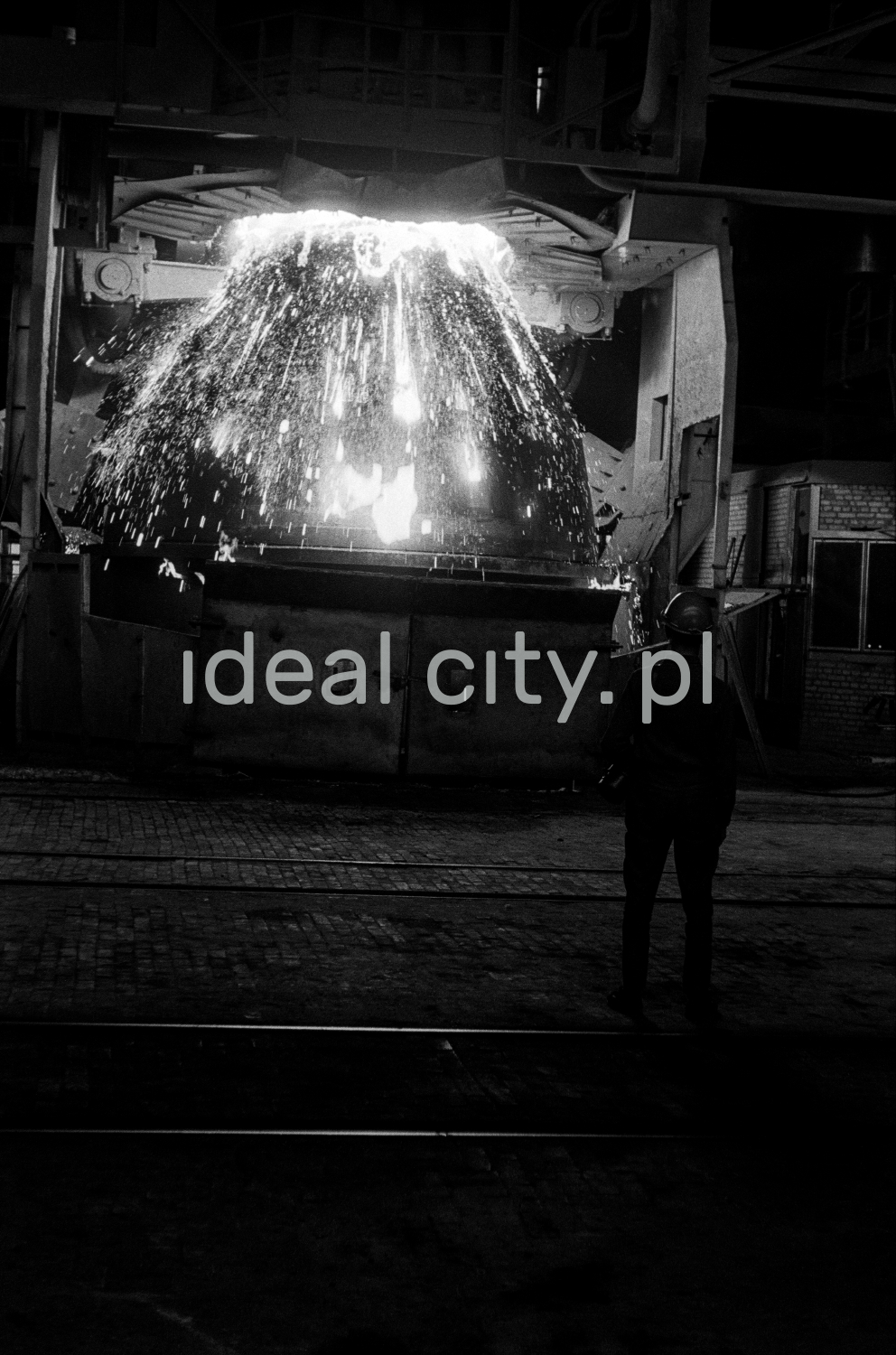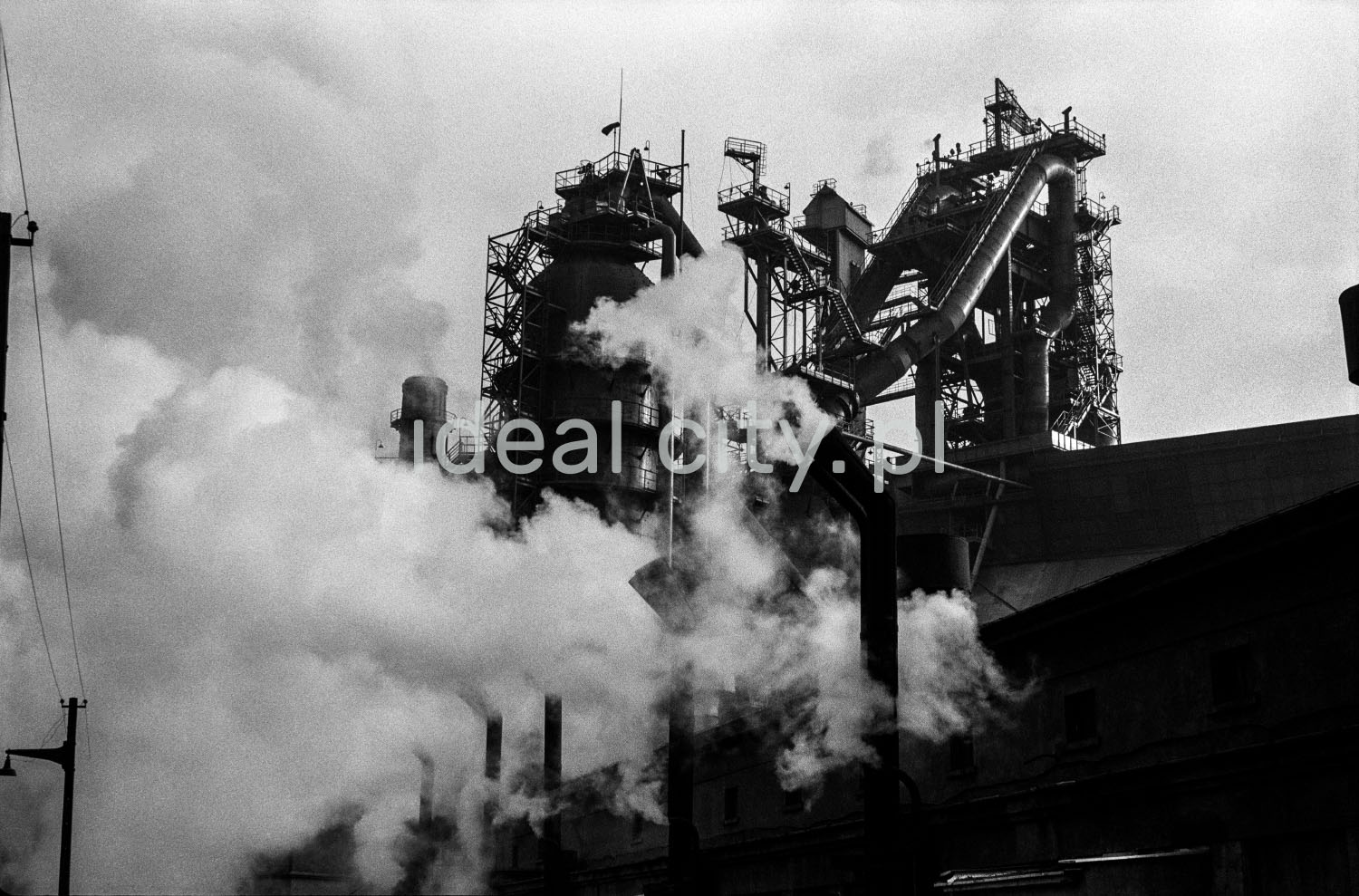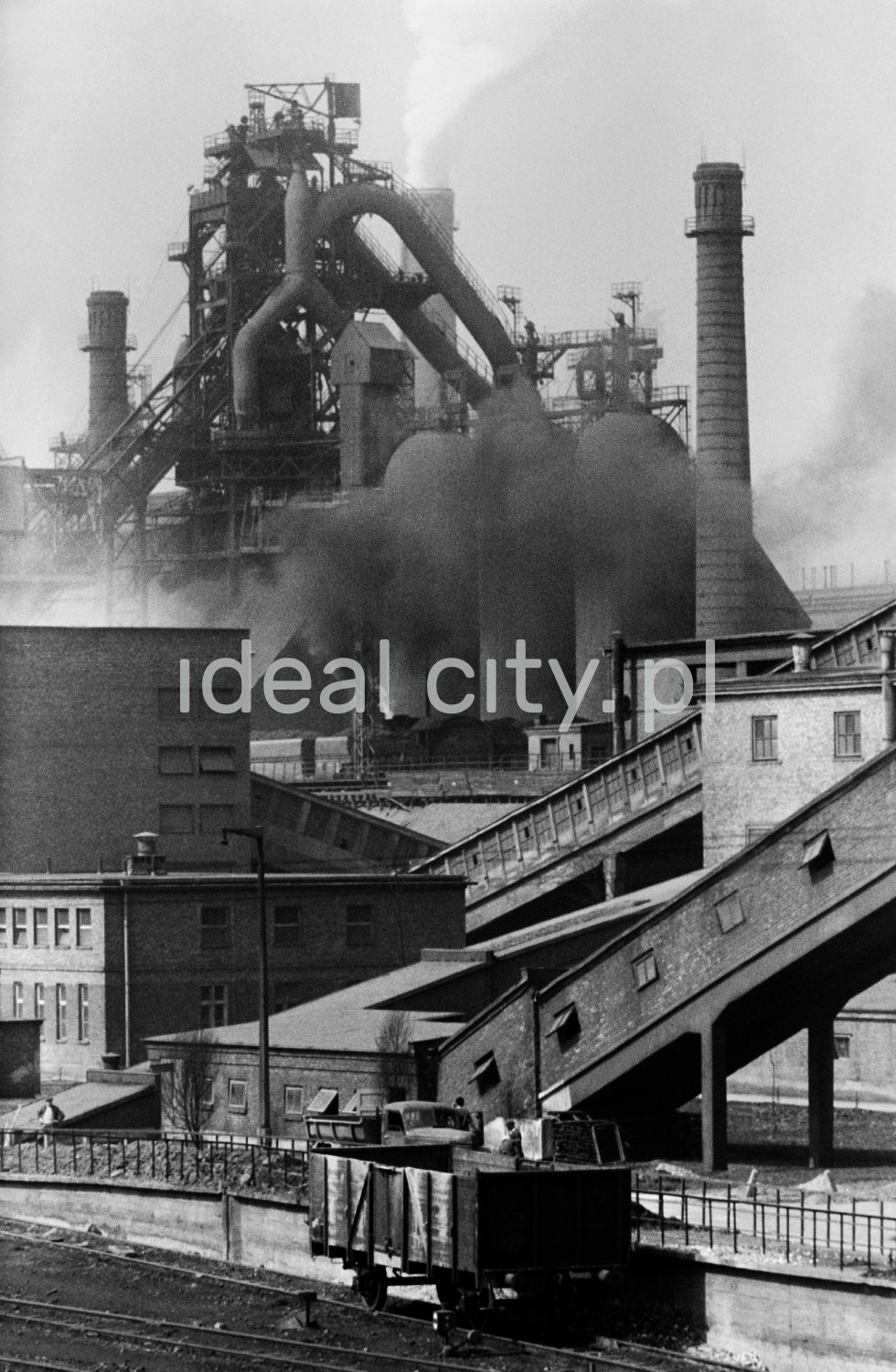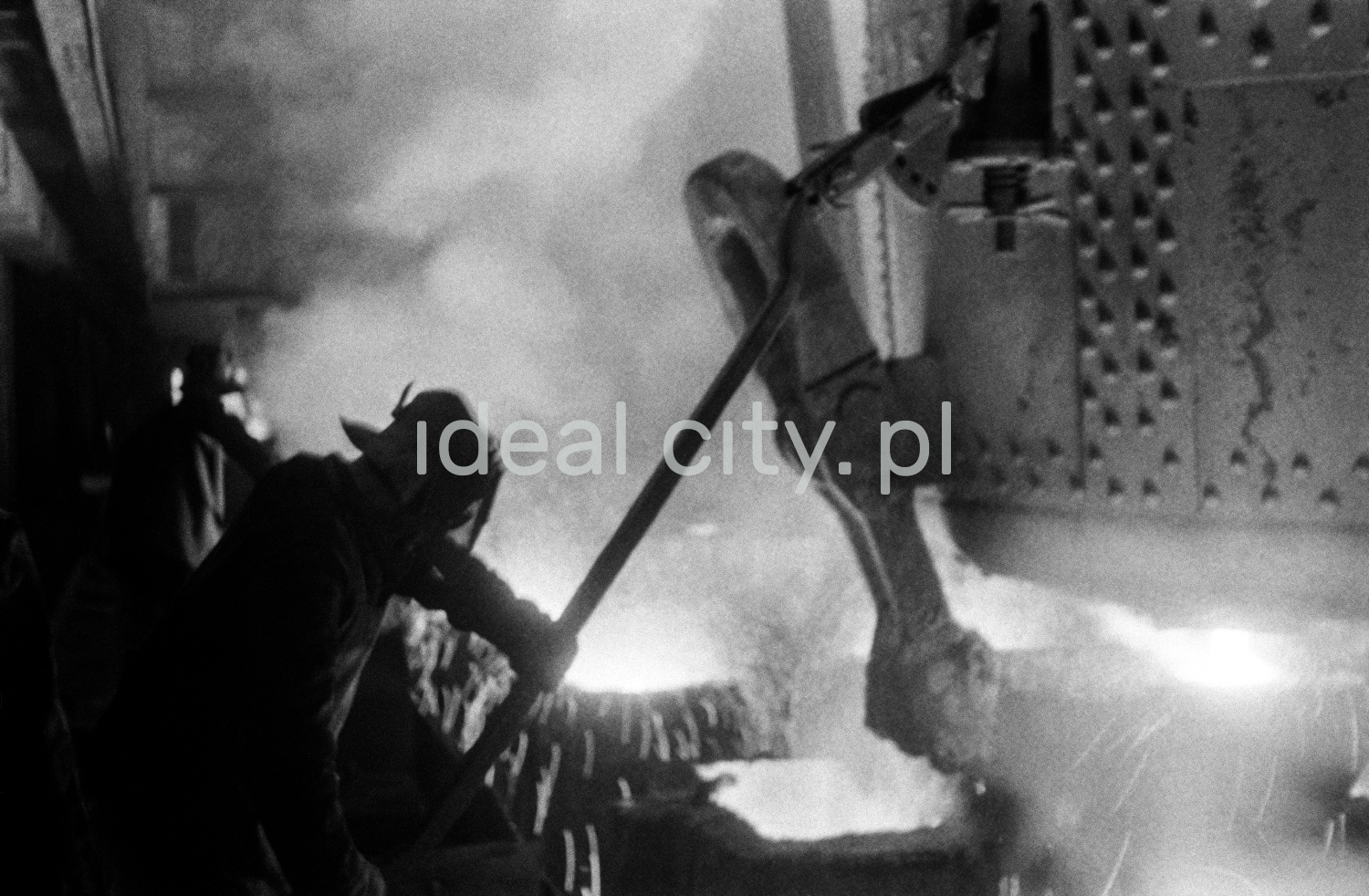MOLOCH
From the cycle Nowa Huta Observations
Kraków and Nowa Huta – Sodom and Gomorrah
You take a tram to get from Sodom to Gomorrah
(Marcin Świetlicki, Opluty)
As far as I remember, it was only once or twice that I found myself in Nowa Huta when I first lived in Kraków, between 1998 and 2004. In the district, or perhaps in a separate city. Back then, it was nothing more to me than the set for Andrzej Wajda’s Man of Marble; it was not curiosity that motivated me to discover the essence of the place, its uniqueness, its separateness. It was only some time later that I compensated for that.
My reluctance then was surely a product of the new kind of propaganda at the early stage of Polish capitalism, presenting Nowa Huta as an instance of “communist incompetence,” and at once of “communist oppression.” Heroic incidents included the story of erecting a church in Nowa Huta, or Masses held outdoors.
A cliché, a stereotype was created about Nowa Huta.
The term homo sovieticus (Soviet human), coined by Alexander Zinoviev and popularised by philosopher and priest Józef Tischner, denoted a human being dependent on state aid, incapable of independent action, possessing no creative skills. At that time I was incapable of breaking free from that idea. In the 1990s, the term seemed tailored to the modernising narrative which glorified the logic of neoliberal economy more than anything else. Today, we are observing the effects of that turbo-capitalist race which has bequeathed the dramatic legacy of A and B regions – falling into different categories and given different possibilities.
The point of thinking is always that it should come by walking. “The sedentary life is the real sin against the Holy Spirit. Only those thoughts that come by walking have any value” (Nietzsche, Maxims and Arrows). The city needs to be walked over. Thousands of kilometres made by photographers Henryk Makarewicz and Wiktor Pental.
Similarly, writing has sometimes to be “done by feet”:
“I do not write with hand alone:
My foot does writing of its own.
Firm, free, and bold my feet engage
in running over field and page.” (Nietzsche, “Writing With One’s Foot”, in The Gay Science)

When I returned to Nowa Huta it was for a different purpose. I came to attend an event and exhibition called Futuryzm Miast Przemysłowych (Futurism of Industrial Cities), as well as to see some play performed at the Teatr Łaźnia Nowa. Symptomatically, it was in Nowa Huta, at the former Światowid Cinema, that I staged the first exhibition in Poland devoted to social costs of what happened in the country after 1989. In the city of labour… after its authority had fallen to bits which I am discussing in detail in the text about labour-related issues.
The ‘reading’ of them asks not for description (which would be like explaining a joke in the case of photos), but for an analysis and, perhaps, an interpretation. Using this material as the base, it seems worth paying attention to the components of the city, the citiness, to which we are led by watching them, and which makes us think. Thinking these concepts into the city. From the perspective of the present day. And not necessarily a fantasy of the past, a journey to which is but a hypothesis of what “once was.”
When Nowa Huta was coming to be, it was / was supposed to be a dynamic creation of victorious ideology. But we should keep in mind that all cities were determined by some ideology. Bronisław Baczko wrote in Wyobrażenia społeczne: “Each city is first and foremost a projection of social dreams into space.”
Moloch was a Semitic deity, a terrifying and insatiable one, demanding sacrifice. At some stage in history it grew to be synonymous with the city.
The city as a moloch of people.
The driving force was, after all, City – Mass – Machine, with priority given to usefulness. Is there an ideal city? What is the city today?
Some images of cities are made in a frenzy and constitute records of a compulsive fascination; later on, they undergo careful selection. Other methods involve cataloguing a chosen fragment of life. In the end, they are all relative and reflect not a common picture, but the way their author thinks because “each man bears in his mind a city made only of differences, a city without figures or without form, and the individual cities fill it up.” (Italo Calvino) Residents of each and every city in the world are fully convinced of its uniqueness and they would probably be ready to defend this view. Genius loci. This is no different for Nowa Huta. Even though, as Marek Hłasko used to say, “rooms are identical everywhere.”
Fantasies of greatness relate to all aspects of life, they have come after decades of democratisation processes and endeavours to expand the Western world under (at least) slogans of unification, establishing partnerships, attempts at dispersing power, introducing the policy of local self-governance, civic awareness mottoes, and last but not least, sustained development.
We are living in an era of a peculiar cult of cities. Citiness is becoming trendy, with its own gadgets, new symbols, related theories; new legends are developed.
In Poland, after 1989, the city has once again turned into an arena of open politics, economy, and worldview debates. On the one hand, this has led to heightened activity of urban movements doing their best to negotiate all changes at grass-roots level. On the other, it provided space for an unregulated market oriented towards profit, using the euphemism of free market as an instrument of great corporations’ monopoly and intense competition with their exposed winners and invisible losers. The recovered city soon began to split into common space and fenced-off privatised areas.
Ideologies are back in the streets, colliding. And so are security barriers.
Establishing a city required an idea, a doctrine, a historical, religious or civil identity readily protected by a given community. It was concurrent with belief in harmonious immortality, order and progress of cities (the myth of Rome), although history has demonstrated that cities without a design for the future do fall.
Folio 265 of Leonardo da Vinci’s Codex Atlanticus records pieces of evidence related to the earth’s expansion. It lists many buried cities. They are found next to sea fossils, disinterred bones…
And let us not forget about the infernal connotations of the city:
Already the Great Khan was leafing through his atlas, over the maps of the cities that menace in nightmares and maledictions: Enoch, Babylon, Yahooland, Butua, Brave New World.
He said: “It is all useless, if the last landing place can only be the infernal city, and it is there that, in ever-narrowing circles, the current is drawing us.”
And Polo said: “The inferno of the living is not something that will be; if there is one, it is what is already here, the inferno where we live every day, that we form by being together. There are two ways to escape suffering it. The first is easy for many: accept the inferno and become such a part of it that you can no longer see it. The second is risky and demands constant vigilance and apprehension: seek and learn to recognize who and what, in the midst of the inferno, are not inferno, then make them endure, give them space.” (Italo Calvino).
I have now been given another opportunity by the rich heritage of the city held in the photographs by Henryk Makarewicz and Wiktor Pental.
It is far from straightforward, having such an archive at your disposal. Nowa Huta is one of few cities with this type of iconography and such a resource of visual information.
City structure, just like text structure, apparently demands a whole. This is illusory. All creation has the nature of a palimpsest, assorted bits of a whole which cannot be embraced.
And what would the arcades of Nowa Huta be like, what would they be made of?
***
The city was shaped by masses – a proceeding march of prospective victors. Hostages, model workers – the workaholics of communism.
The walking mass of the idea is, however, parallel to today’s model workers of capitalism – workaholics.
There are imagined, made-up, and real cities. Telluric infernos and earthly arcadias. Airy cities and stuffy cities. Ports, havens, and provinces. Metropolises, theme parks, and one-horse towns. There are also countless images of cities and numerous ways of recording.
“Elsewhere is a negative mirror. The traveler recognizes the little that is his, discovering the much he has not had and will never have.” (Italo Calvino, Invisible Cities)
Nothing lasts.
Dreams of the city’s greatness and success. Greatness manifests itself today in dreams of greatness, and inclinations towards power recur in rough times like the myth of submerged Atlantis keeps reappearing in history.
Cities nowadays advocate ideas of citiness, cities are advocated.
In the political narrative, greatness-related slogans were most prominent during Donald Trump’s presidential campaign and his first months in office; his maxim was “Make America Great Again.” It was actually grafted from Ronald Regan’s 1980 campaign (the maxim was purchased as a trademark) – another Republican with superpower aspirations, whose geopolitical axis of the world continues to influence the mentality of many a politician.
In Poland, such grandiose ambitions keep being cherished by the ruling party Law and Justice (PiS) whose policy of “getting up off our knees” becomes evident sometimes in statements about new alliances, including the concept of Intermarium: outlined by the Baltic Sea, the Adriatic Sea, and the Black Sea (Andrzej Duda during President of Croatia’s visit), or the “greatness of the Polish nation” (Antoni Macierewicz in his regular Głos Polski commentary on TV Trwam).
The best-known manifestation of superpower aspirations nurtured by the Polish government was the attempt to create by force (regardless of residents’ dissent) the vastest city in Europe – Greater Warsaw (larger than Moscow, London, or Paris). Although the reasoning behind this decision was to incorporate the party’s electorate into a territorial scope, the very idea is consistent with its intentions.
This tendency to greatness coincides with the strategy of creating a strong centre of power, a nucleus, e.g. a leader over the party, central authorities over self-government, the state’s attempts to control non-governmental organisations, etc.
Nowa Huta had its own grand ambitions to overshadow Kraków.
***
We may be over-idealising citiness.
This is why fail to understand their fall, end, altered function. Failure is not a symptom of the idea of the city being pointless, it is a fiasco of the concept of the reason. In the Western idea, the absolutist ratio disregards its own limits and persists in seeking a solution whatever it takes, in providing a complete explanation. It also rejects mystery, coincidence, and fate.

